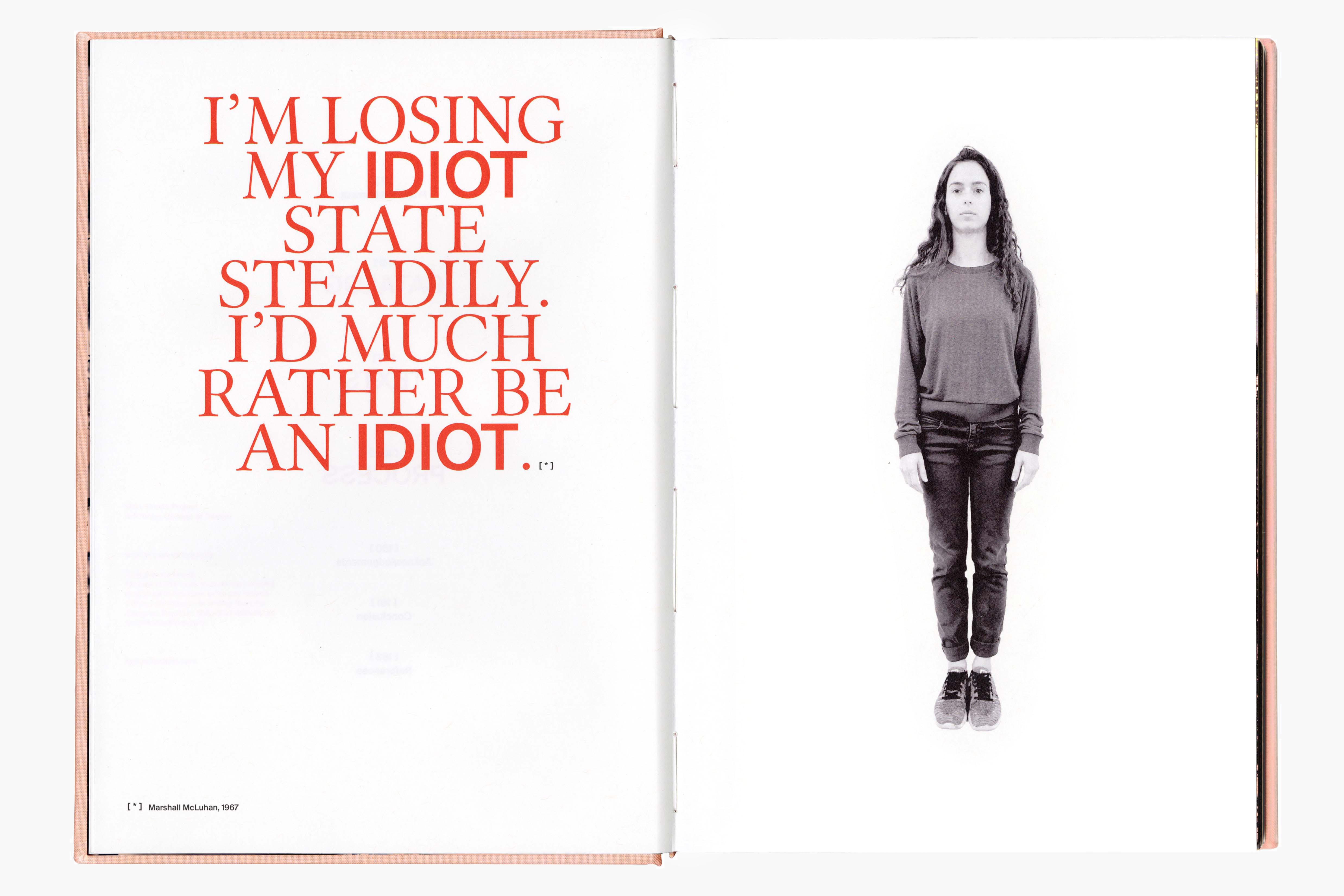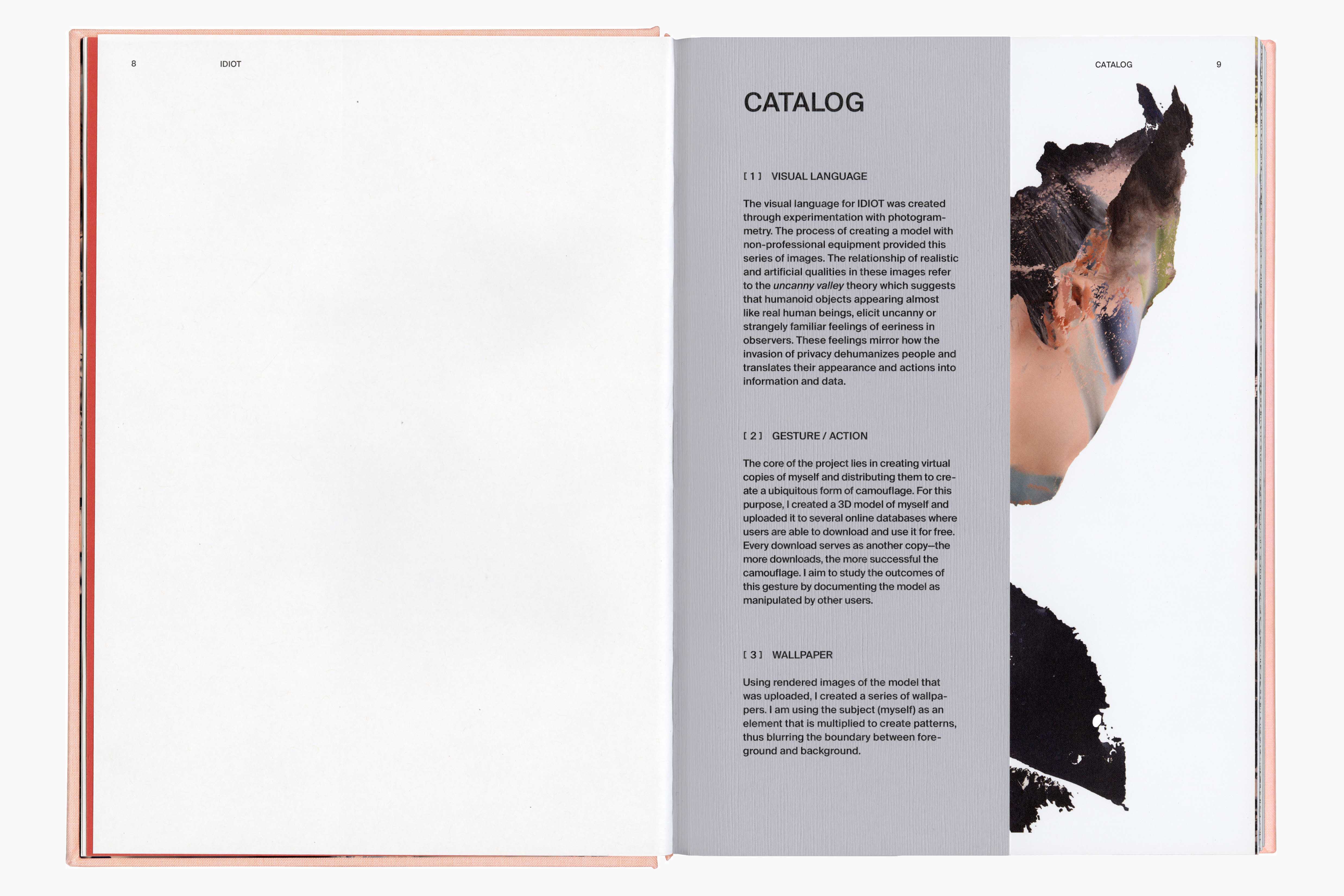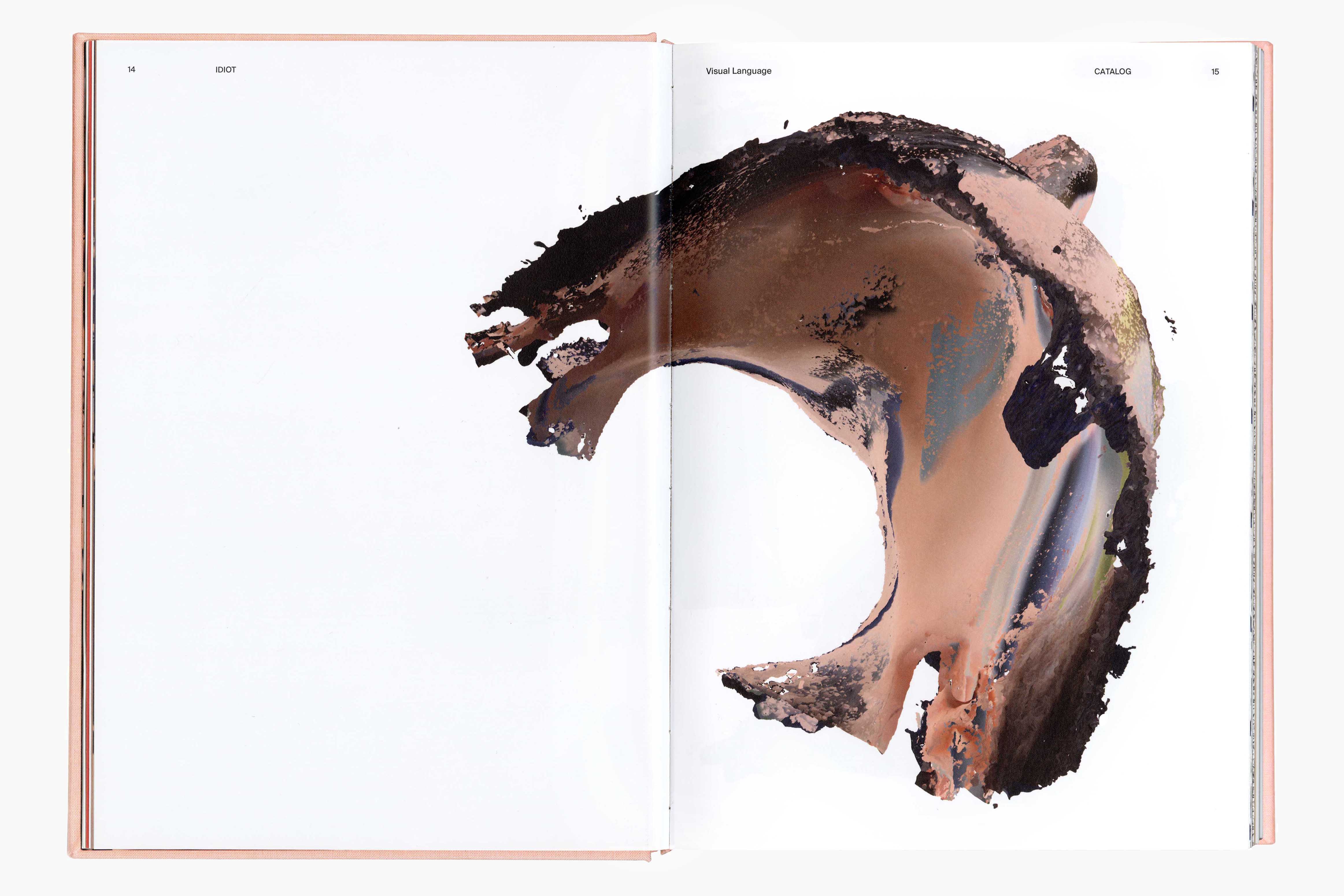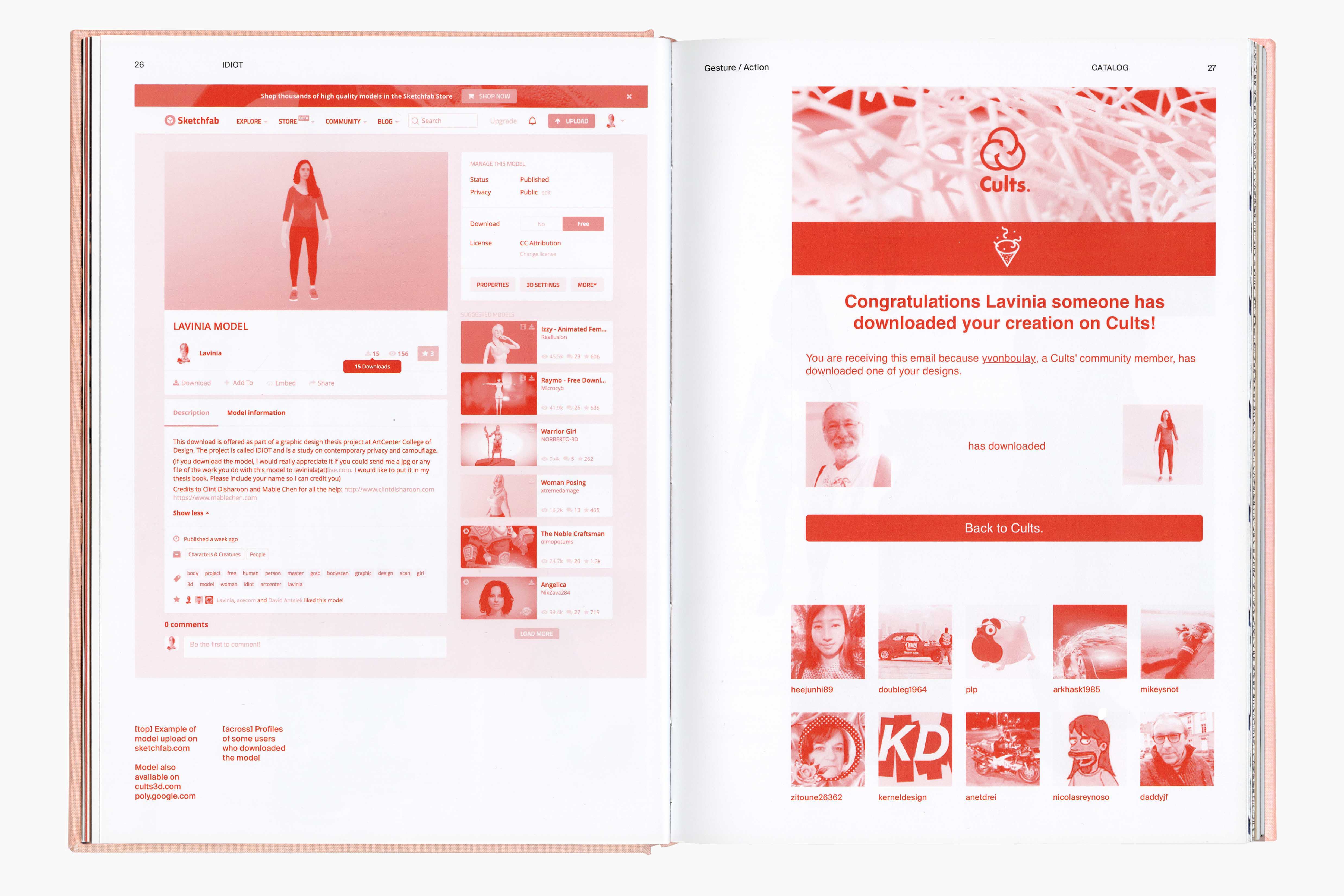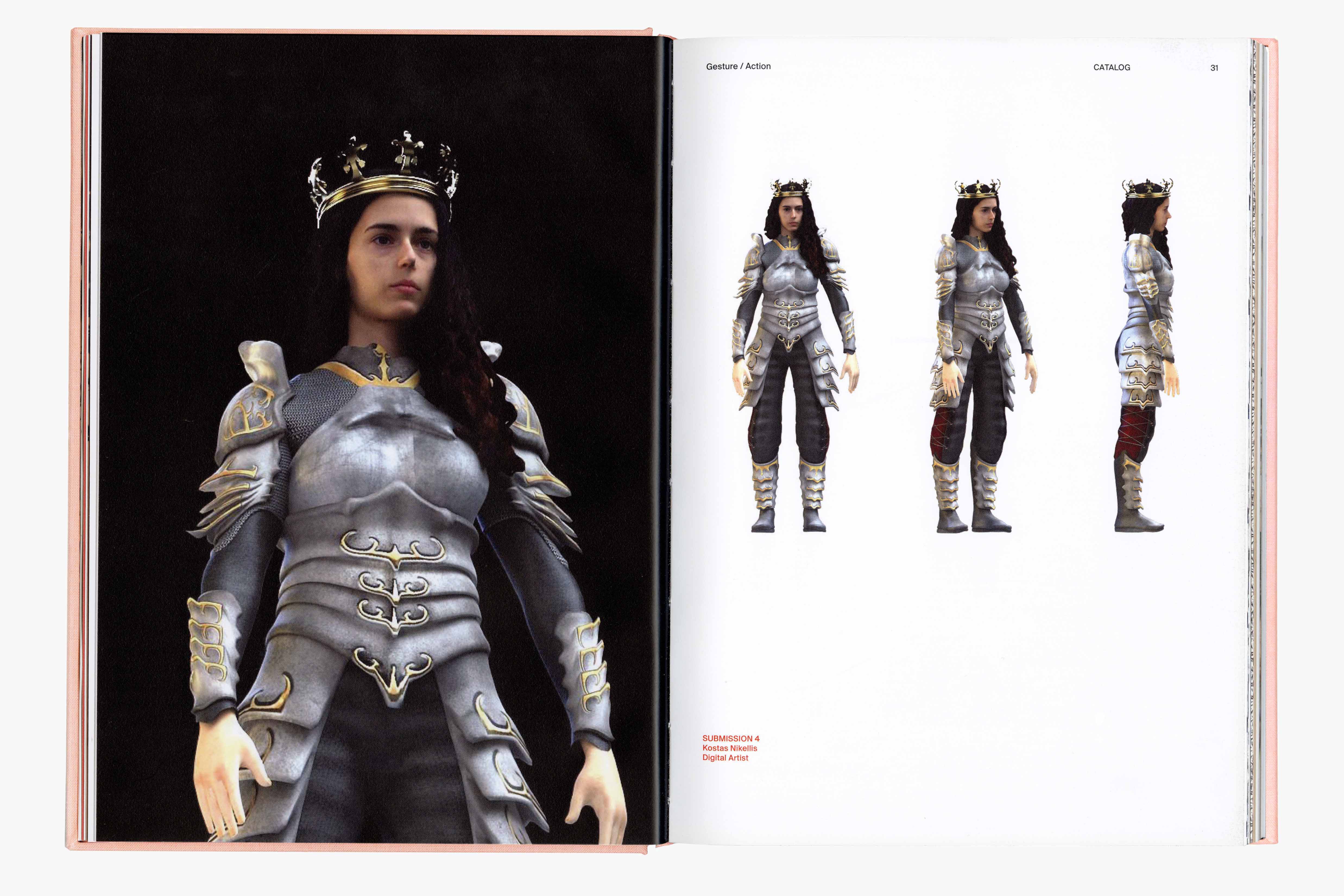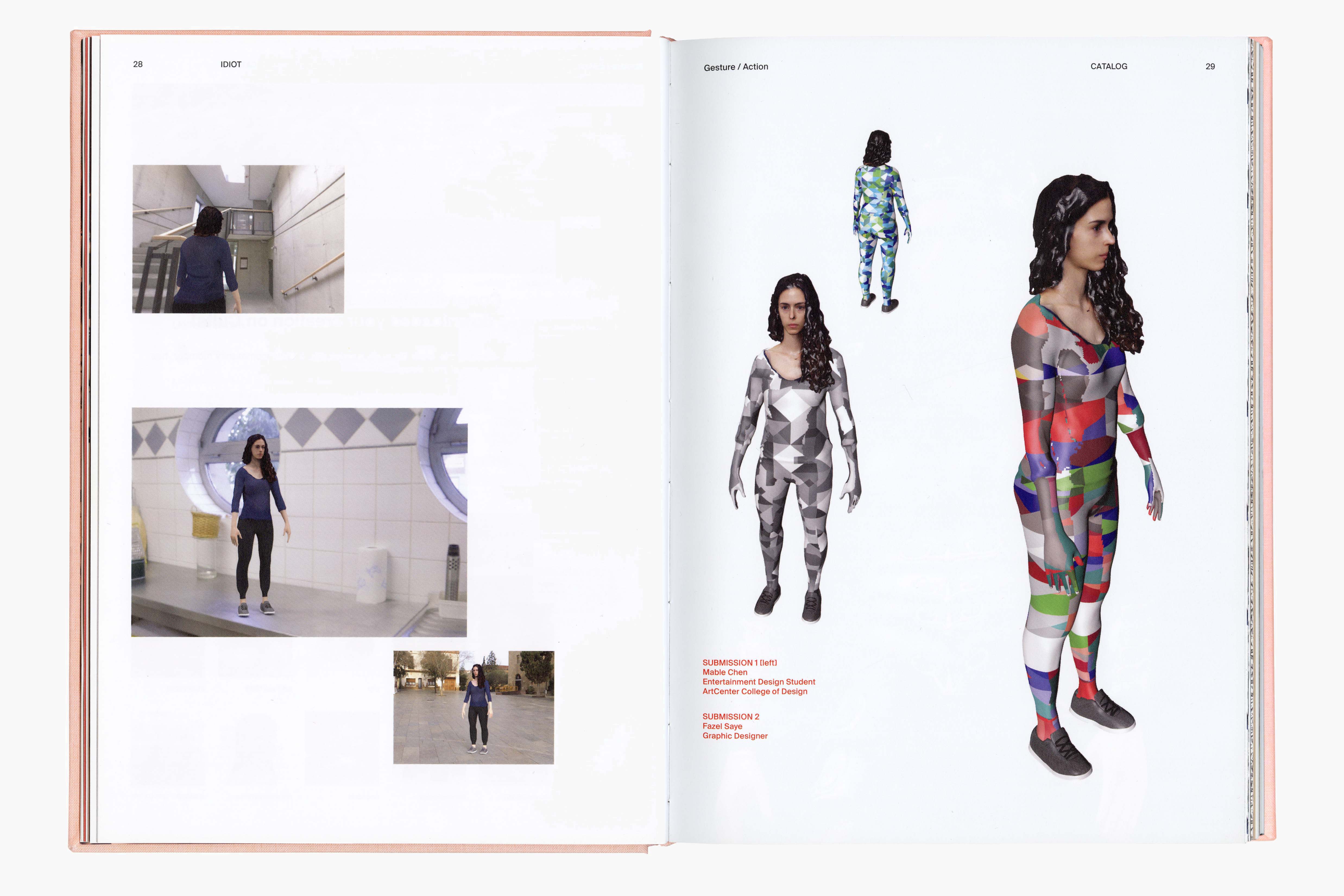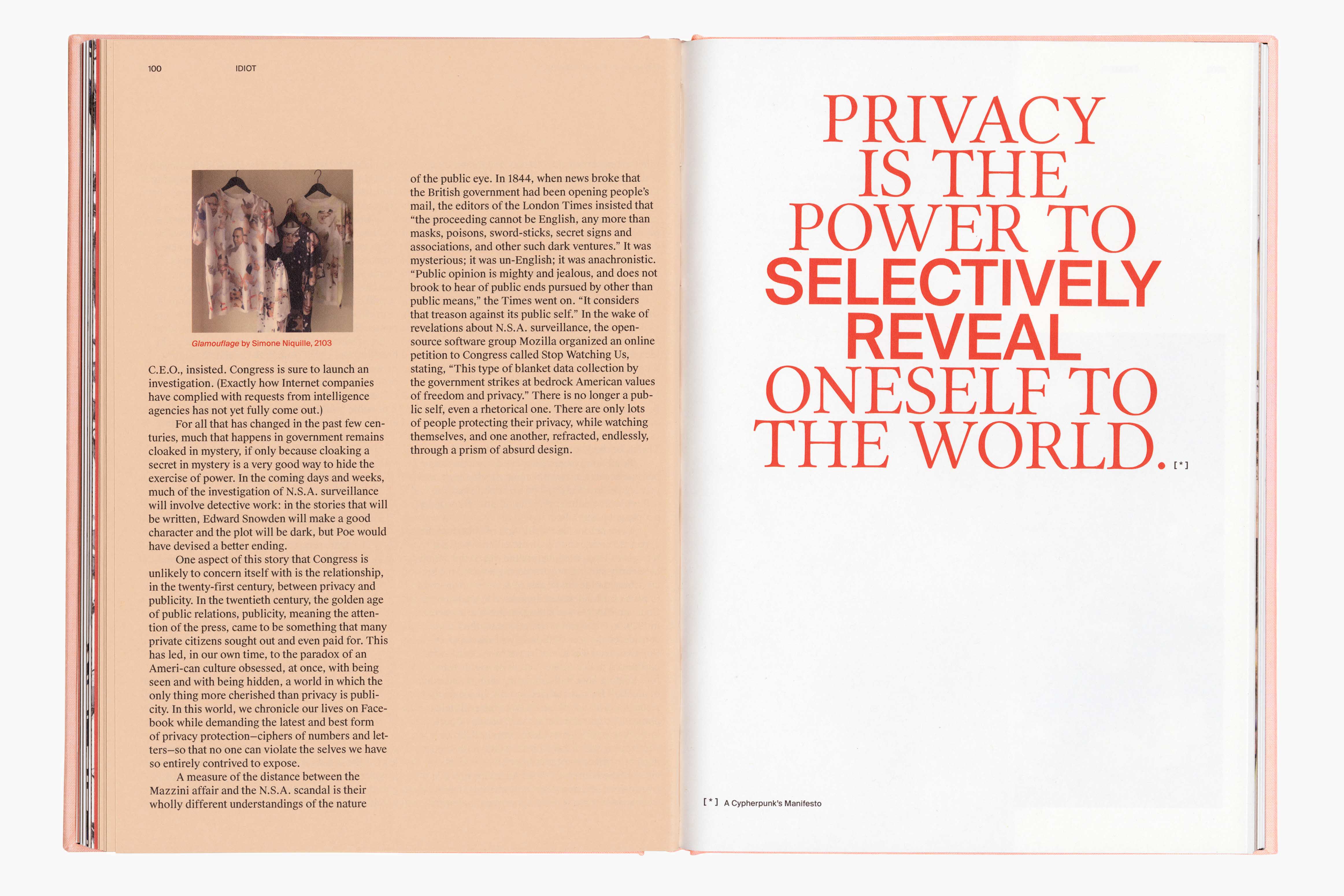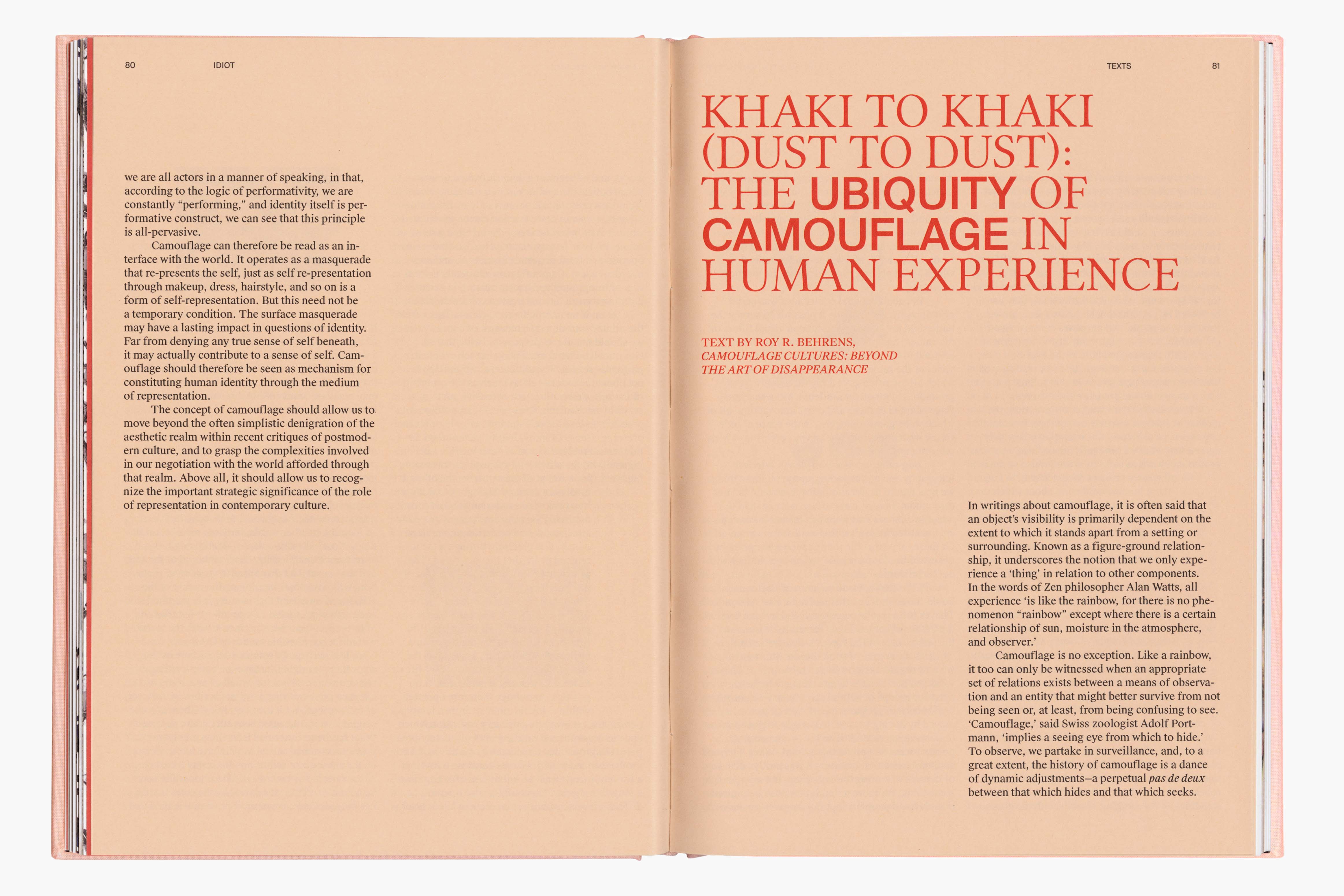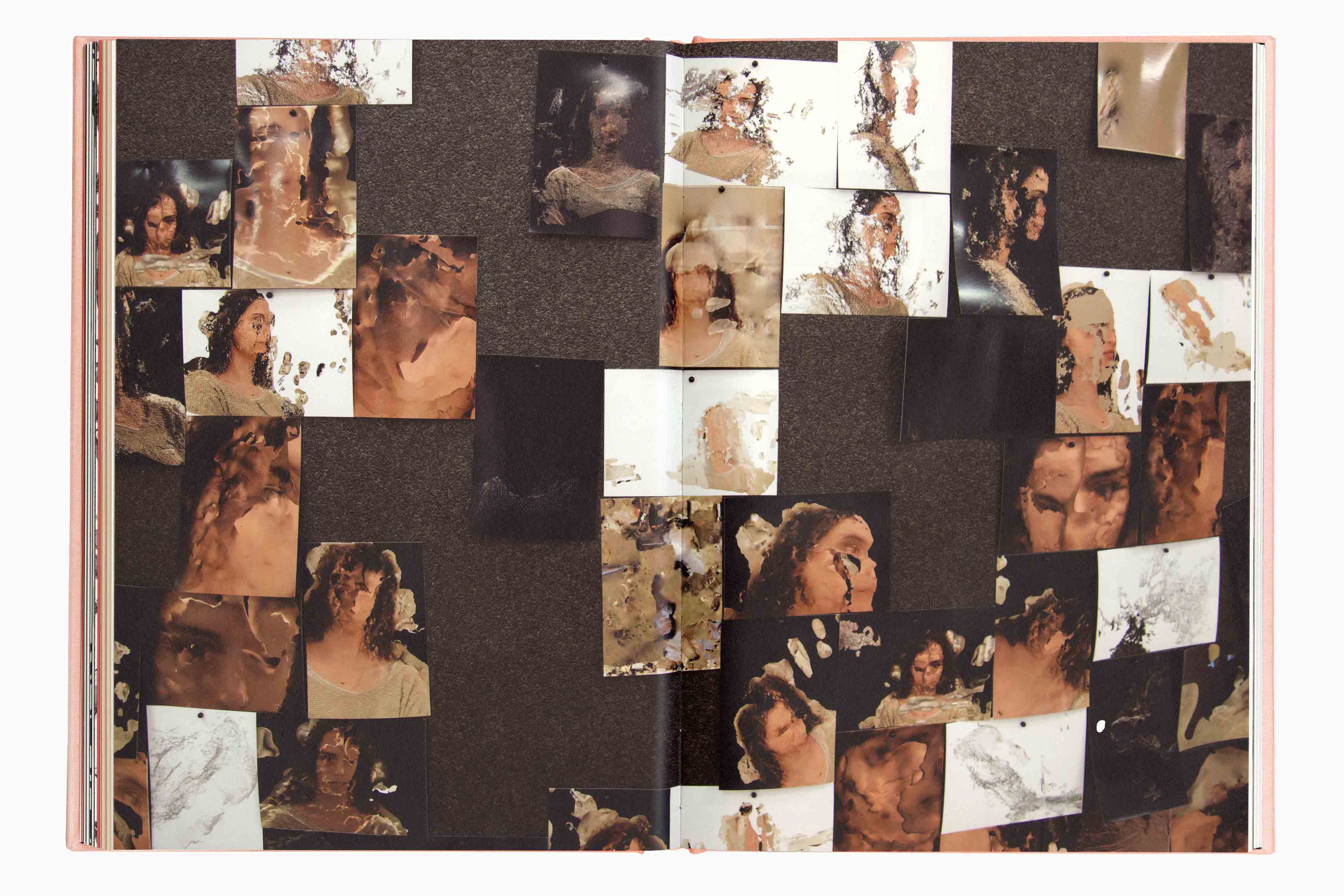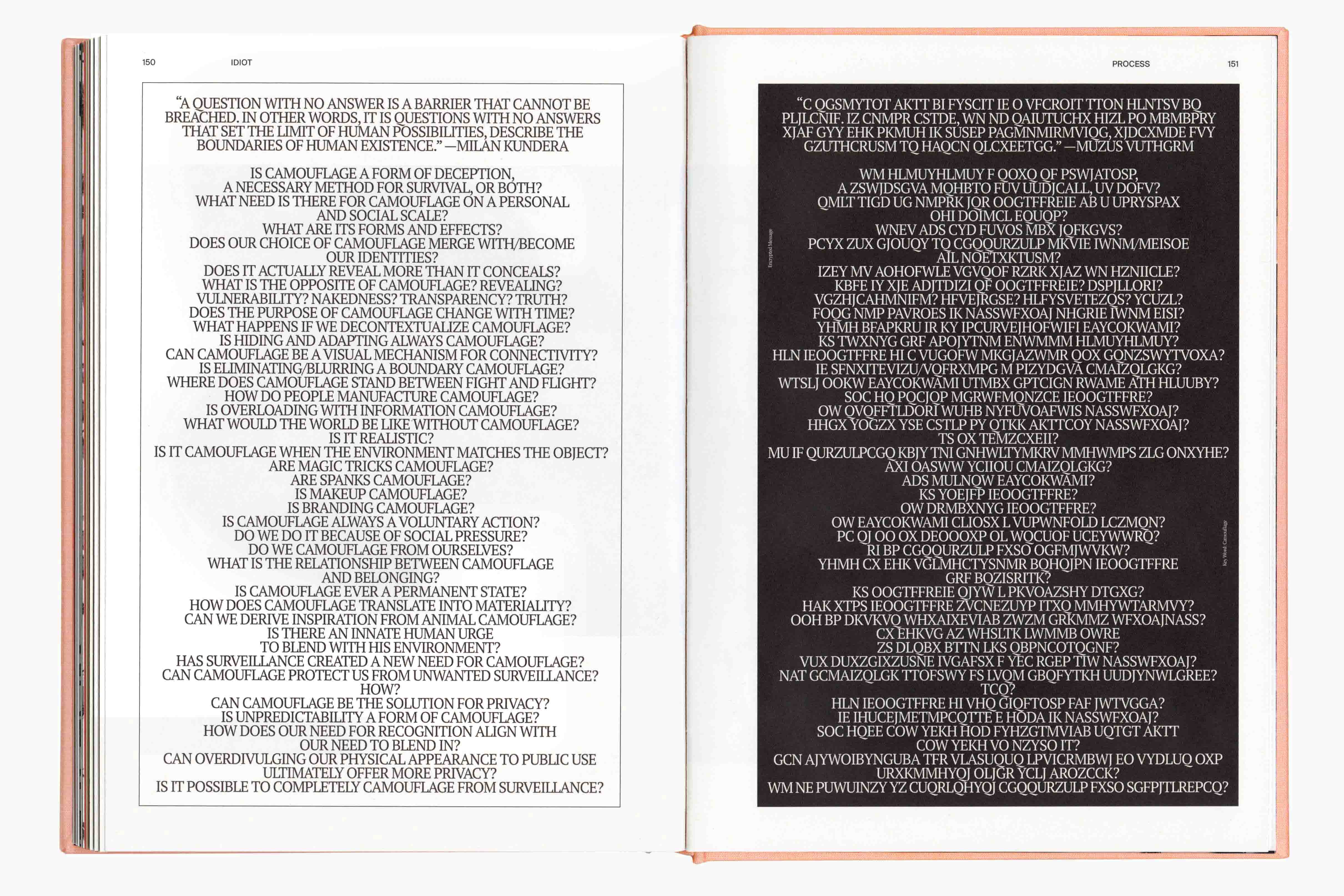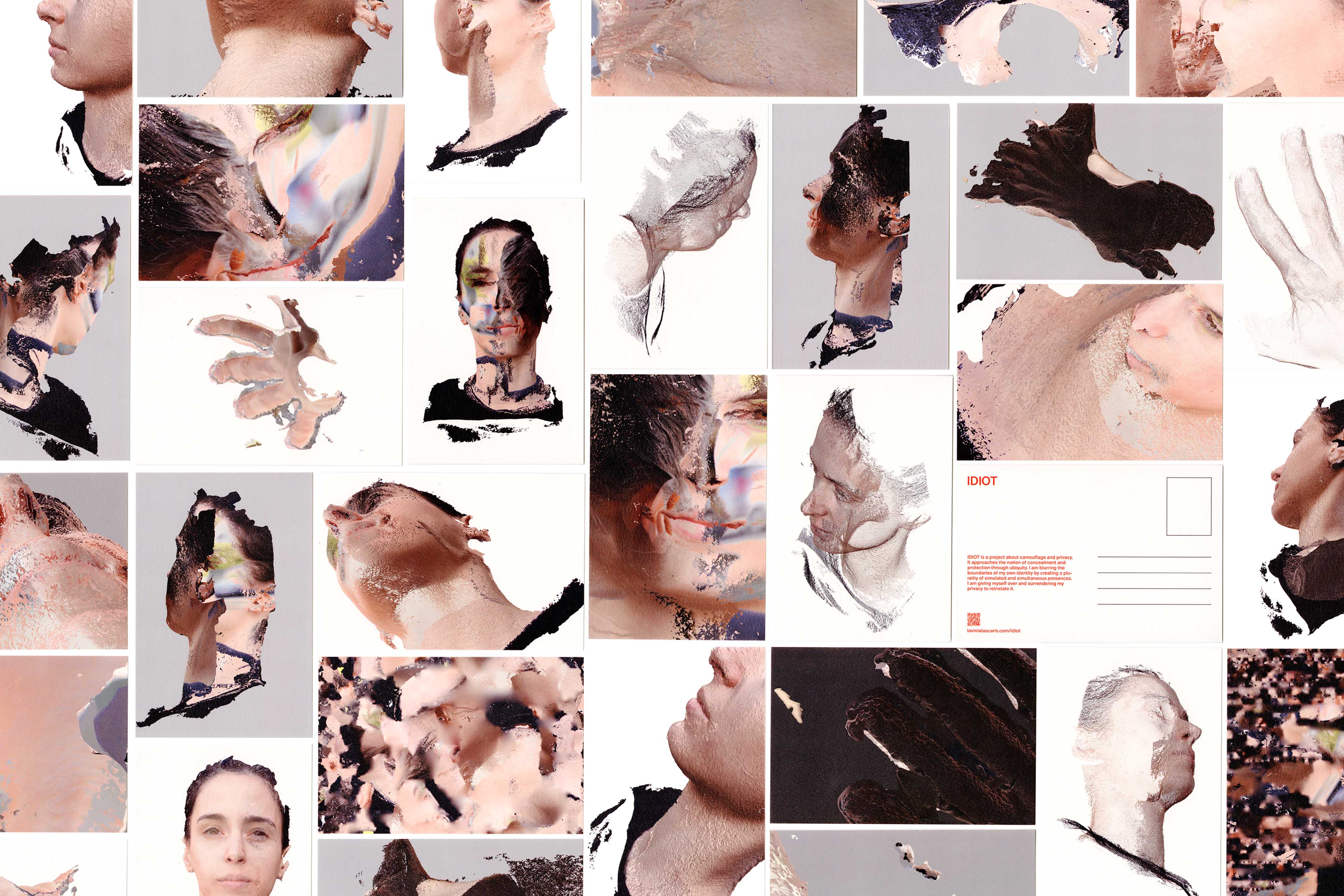
Idiot (grad thesis)
MFA Graphic Design, ArtCenter College of Design, 2018
A study on contemporary privacy and camouflage, Idiot approaches the notion of concealment and protection through ubiquity. I blurred the boundaries of my own identity by creating a plurality of simulated and simultaneous presences, surrendering my privacy in order to reinstate it.
“I’m losing my idiot state steadily, I’d much rather be an idiot,” stated Marshal McLuhan. He refers to the original meaning of the word idiot which derives from the Greek idiōtēs, meaning a very private individual or citizen. The project embraces the word as an ironic reference to its original meaning.
TDC Communication Design Winner 2020
Advisors: Carolina Trigo, Simon Johnston
Special thanks: Matt Adams, Sean Adams, Roy R. Behrens, Mable Chen, Clint Disharoon, Samantha Fleming, Nik Hafermaas, Jessica Helfhand, Eric Heiman, Hsuan Hsu, Annie Huang, Rachel Julius, Michelle Katz, Steve Kim, Kostas Nikellis, Jenny Rodenhouse, Fazel Saye, Alex Seth, Ziyi Xu, Derek Yang
Gesture/Action
The core of the project lies in creating virtual copies of myself and distributing them. For this purpose, I created a 3D model of myself and uploaded it to several online databases where users are able to download and use it for free. Each download serves as another copy—the more downloads the more successful the camouflage. I studied the outcomes of this gesture by documenting the model as manipulated by other users.
Model available at: Sketchfab / Cults 3D



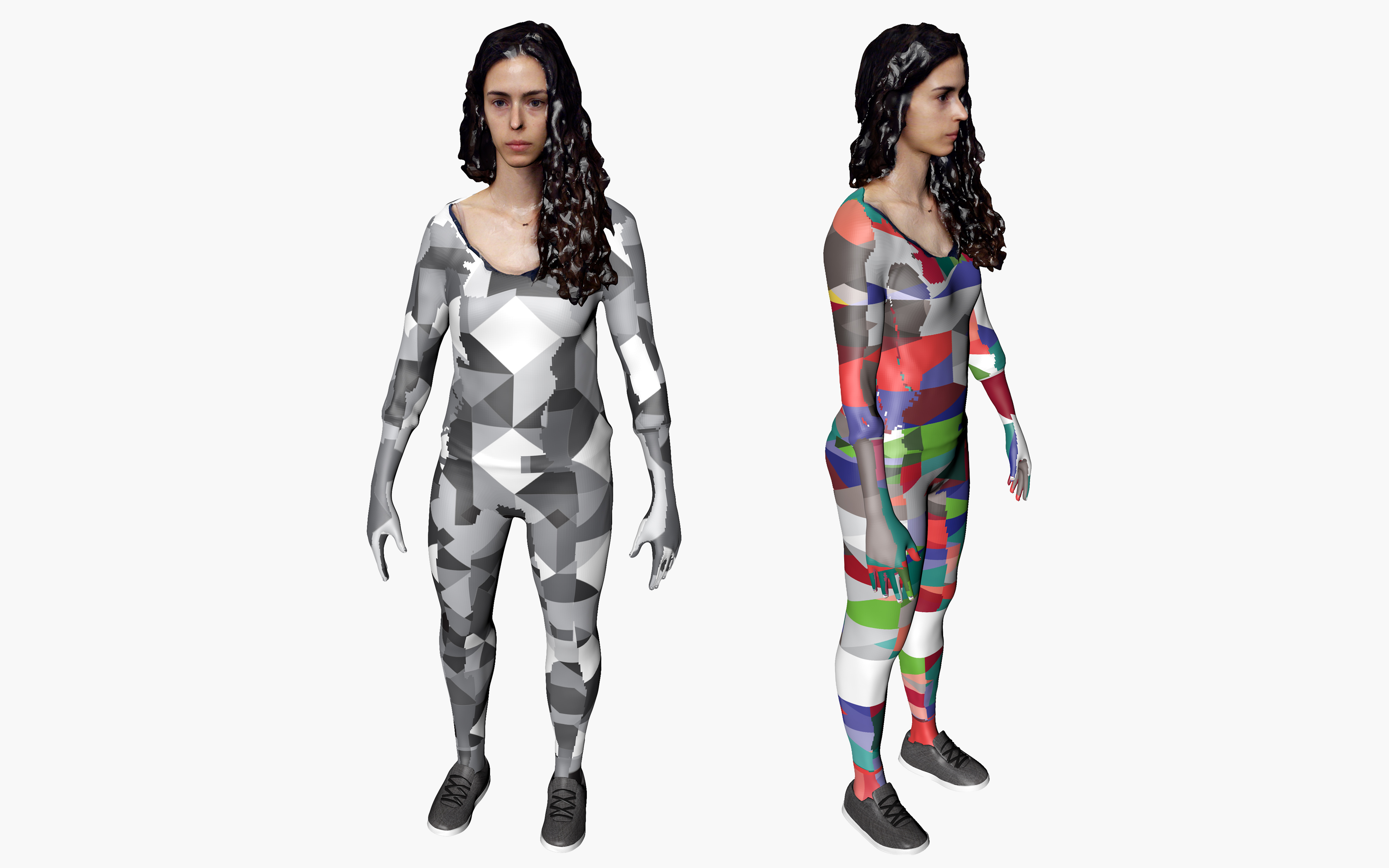
kostas nikellis, digital artist
mike alger, vr designer, google inc
fazel sayeh, graphic designer
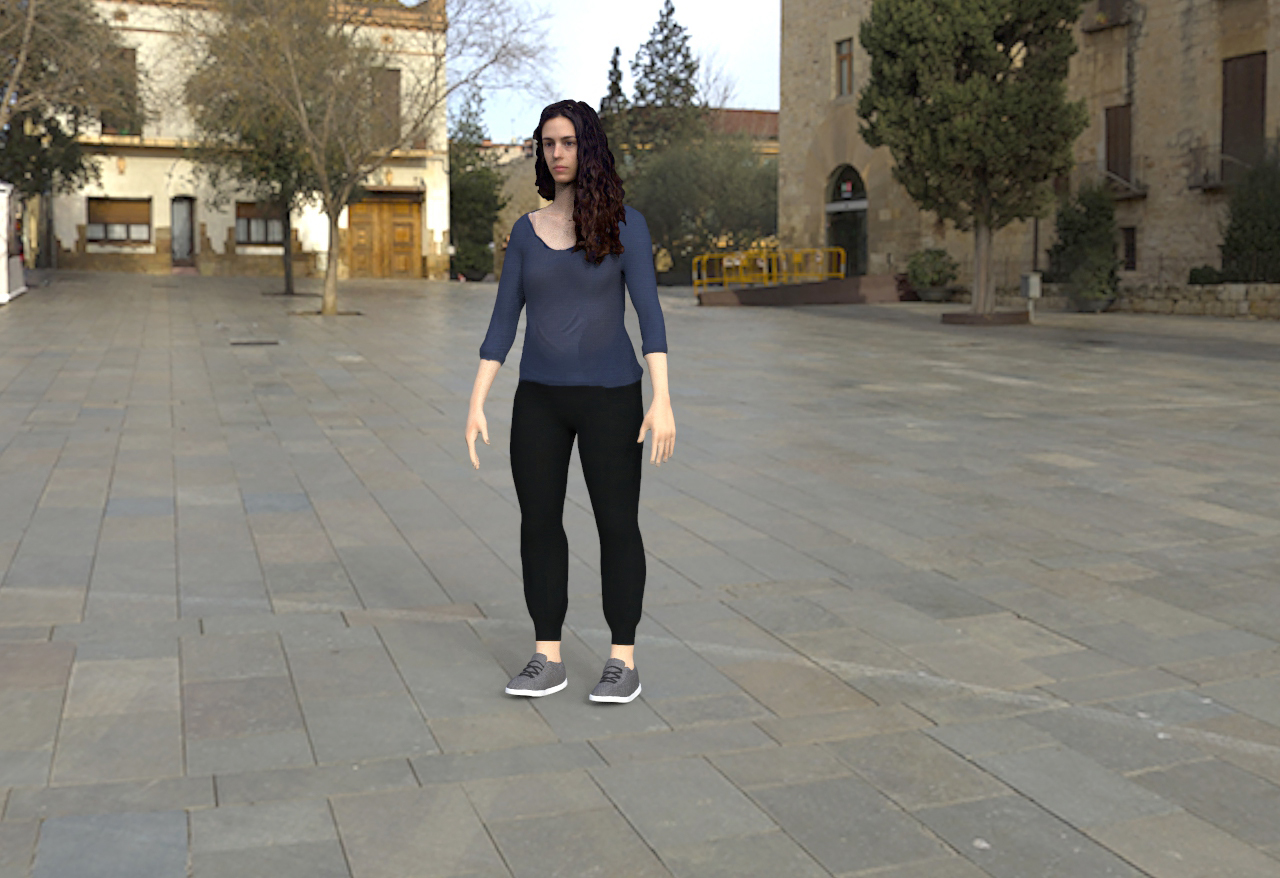

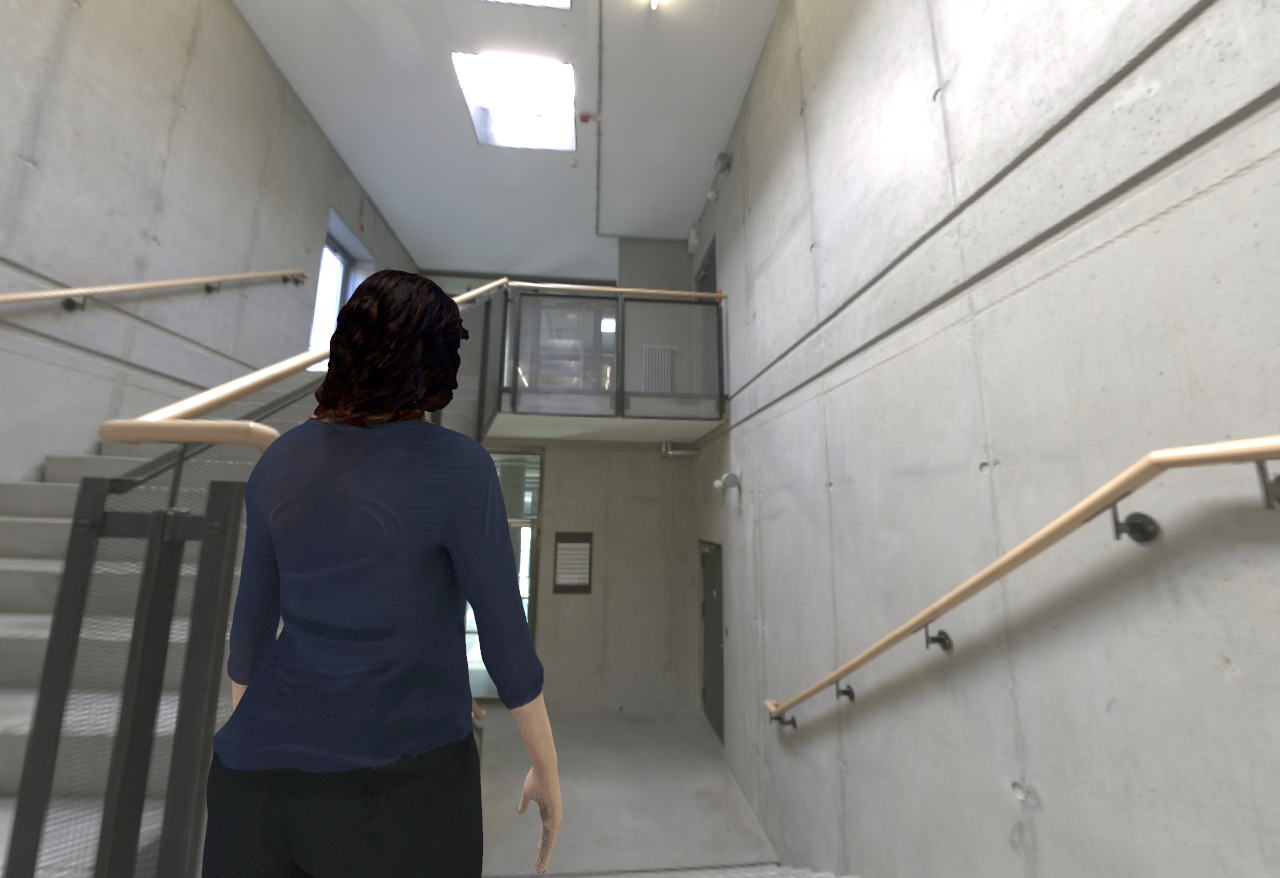
mable chen, entertainment designer
Wallpaper
Using rendered images of the model that was uploaded, I created a series
of wallpapers. I have used the subject (model) as an element that is
multiplied to create patterns, thus blurring the boundary between
foreground and background.


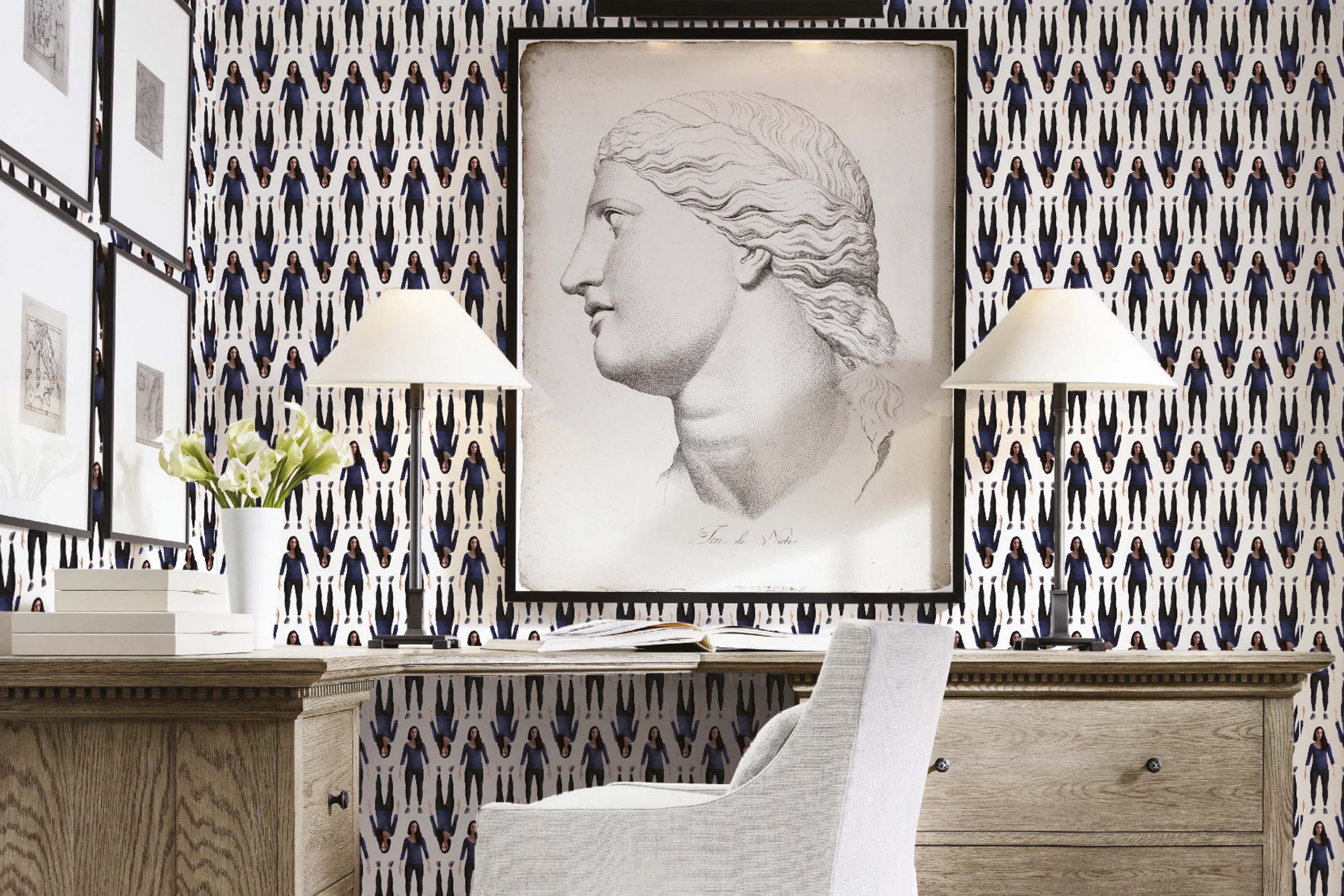
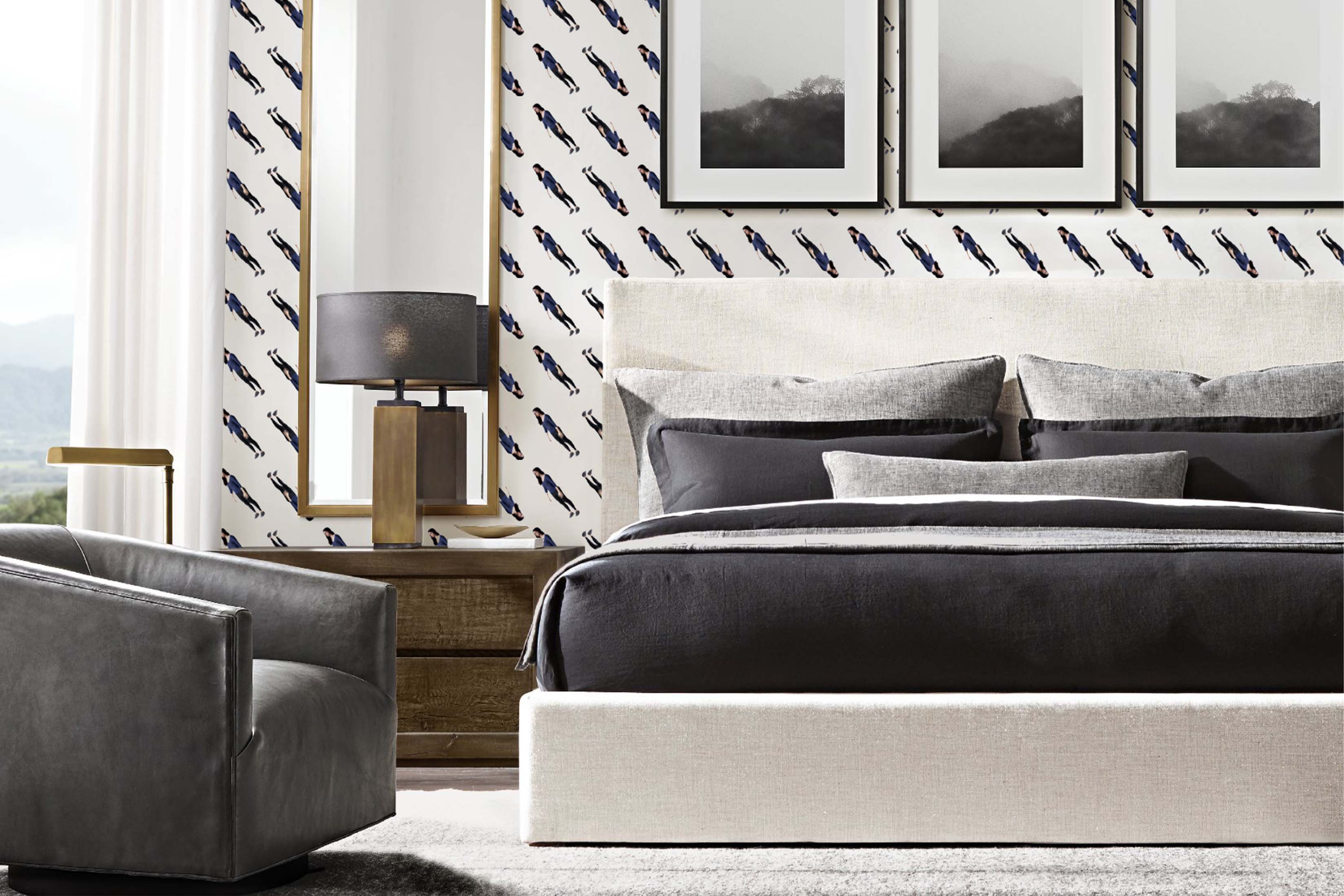


Visual language
The images below were created through experimentation with
photogrammetry. The relationship of realistic and artificial qualities
in these images refer to the uncanny valley theory which suggests
that humanoid objects appearing almost like real human beings, elicit
uncanny or strangely familiar feelings of eeriness in observers. These
feelings mirror how the invasion of privacy dehumanizes people and
translates their appearance and actions into information and data.
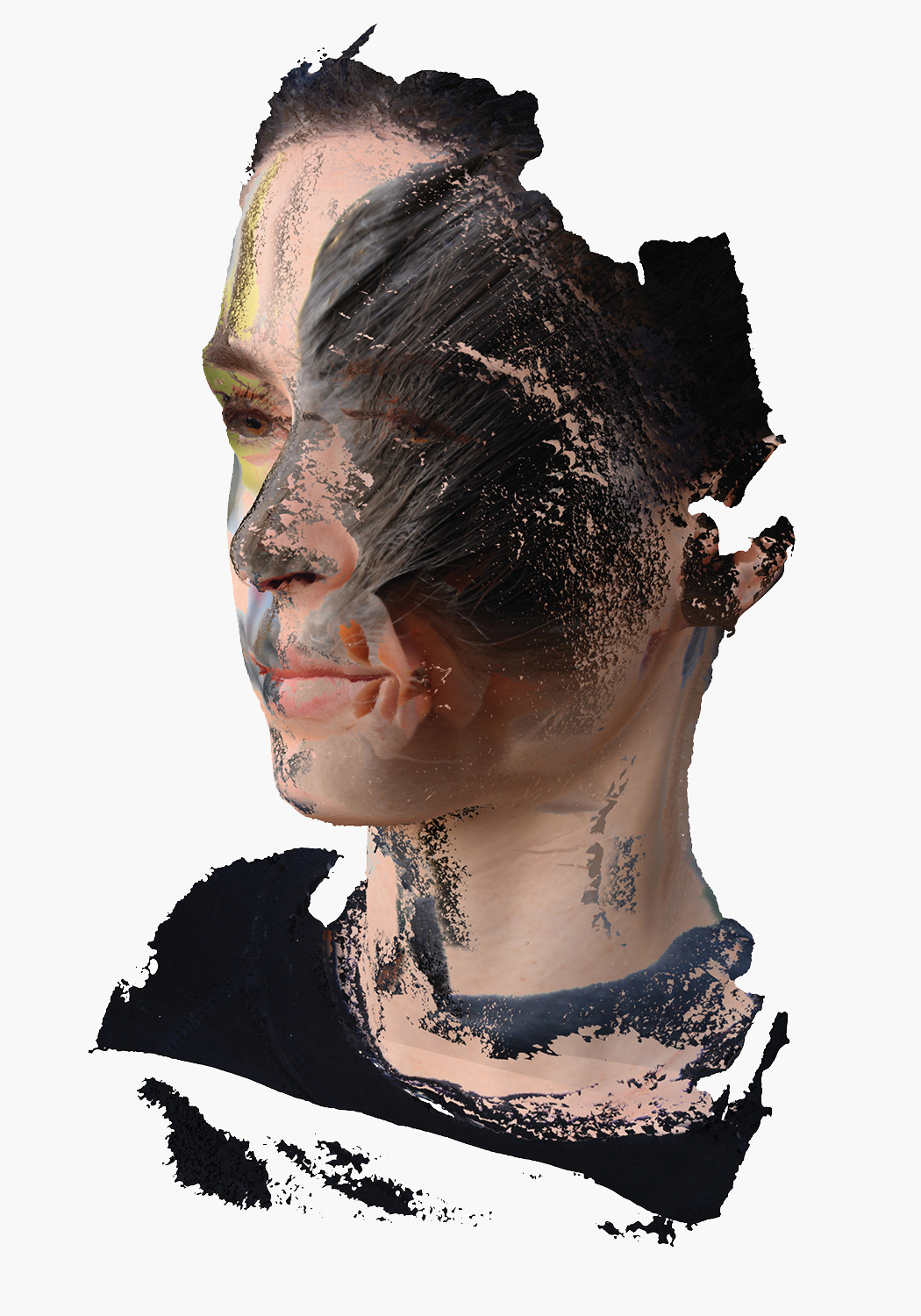

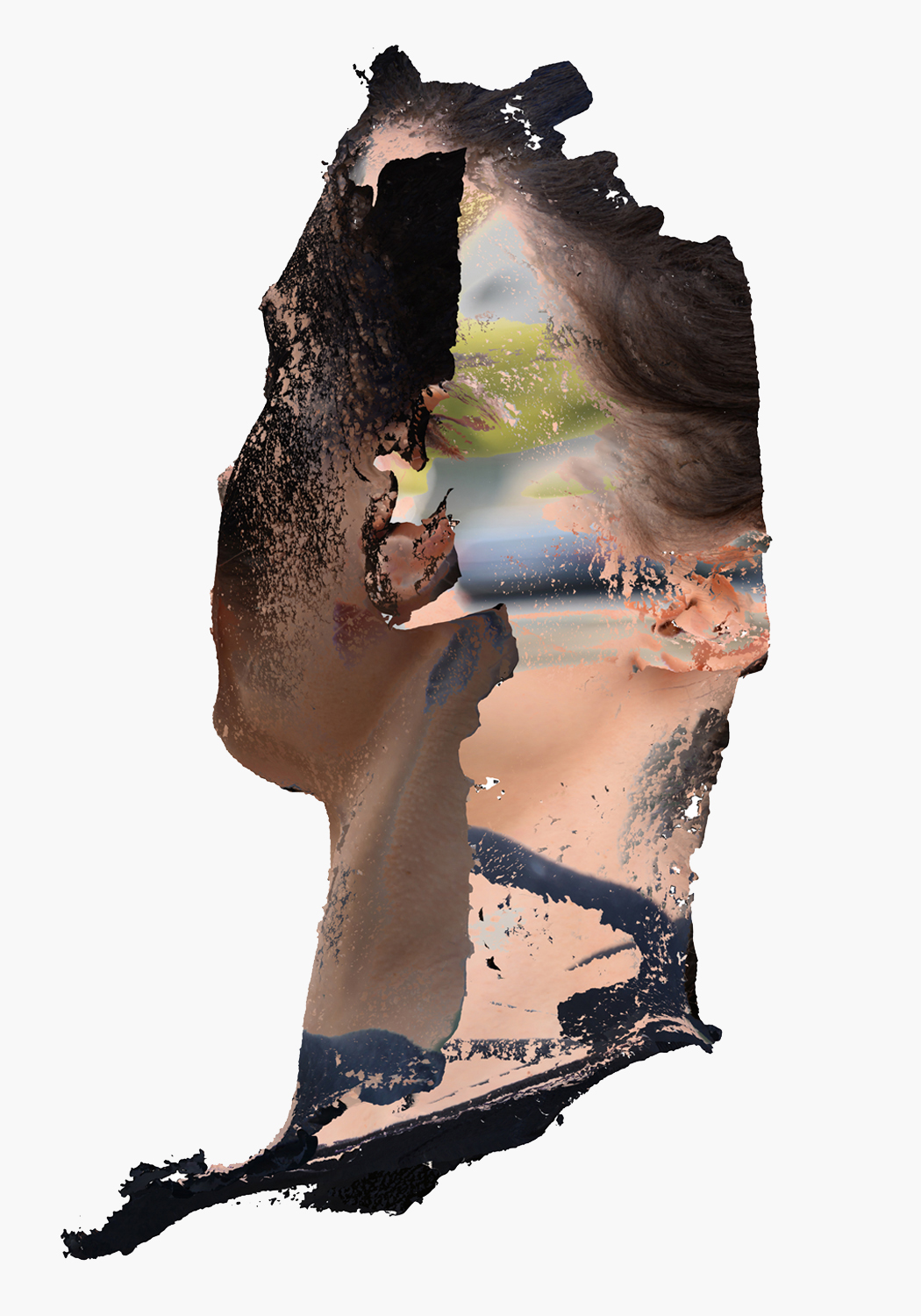
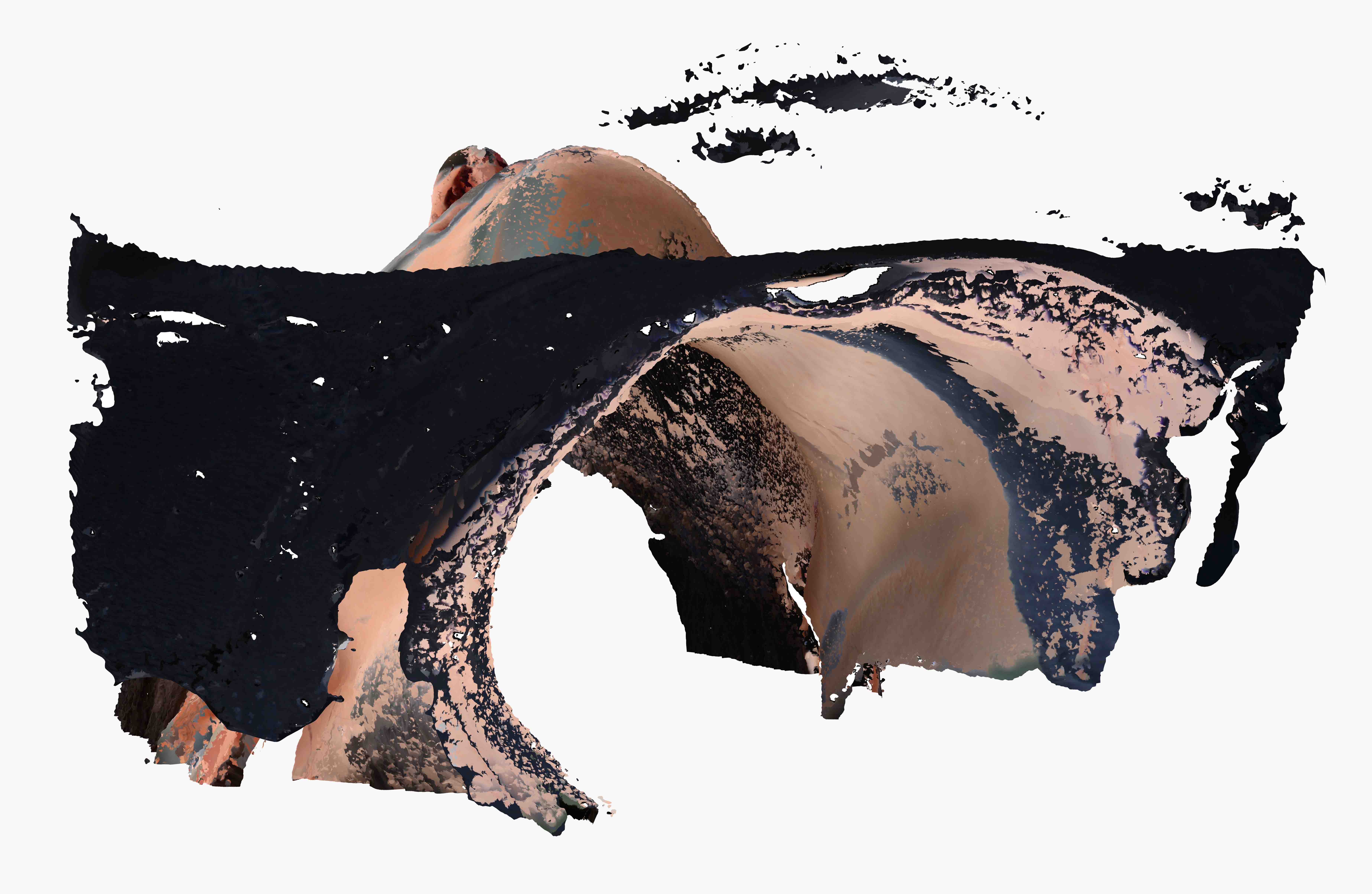
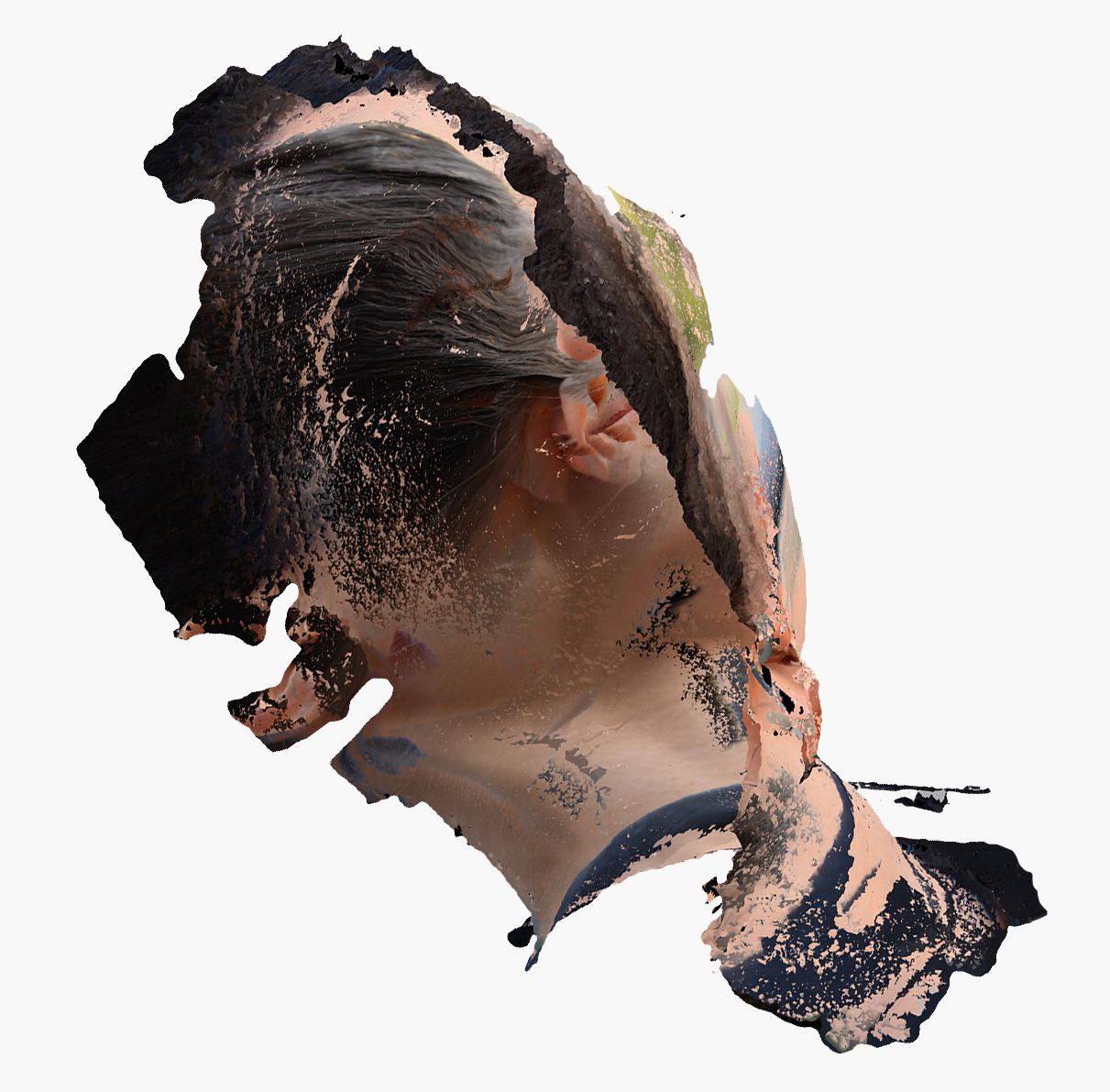
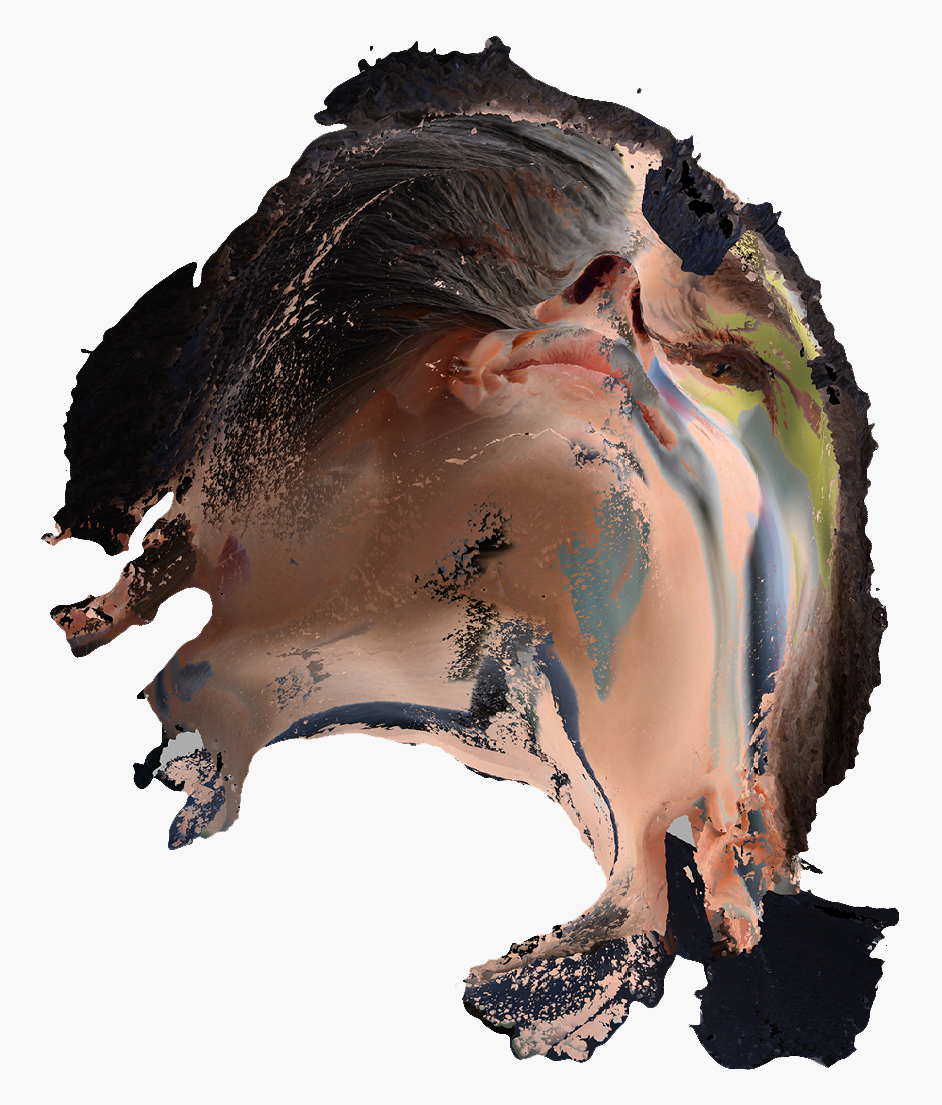
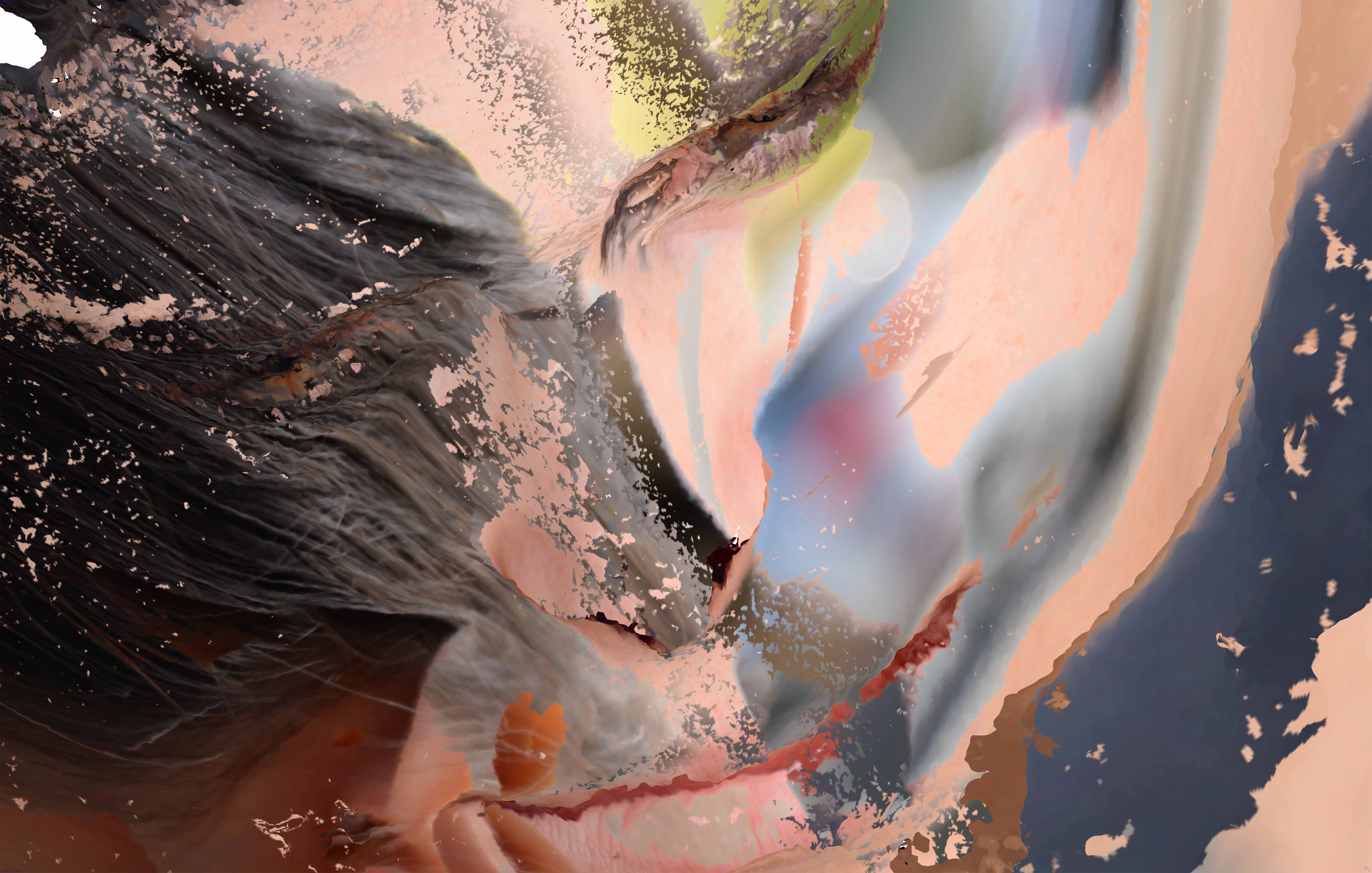
Other studies
These serve as supportive material to the final delivery
of the project concept. There is a photomontage set in my apartment, a
CCTV-type video montage, and a pattern inspired by envelope security
patterns—an early example of how people employed methods of camouflage for privacy.
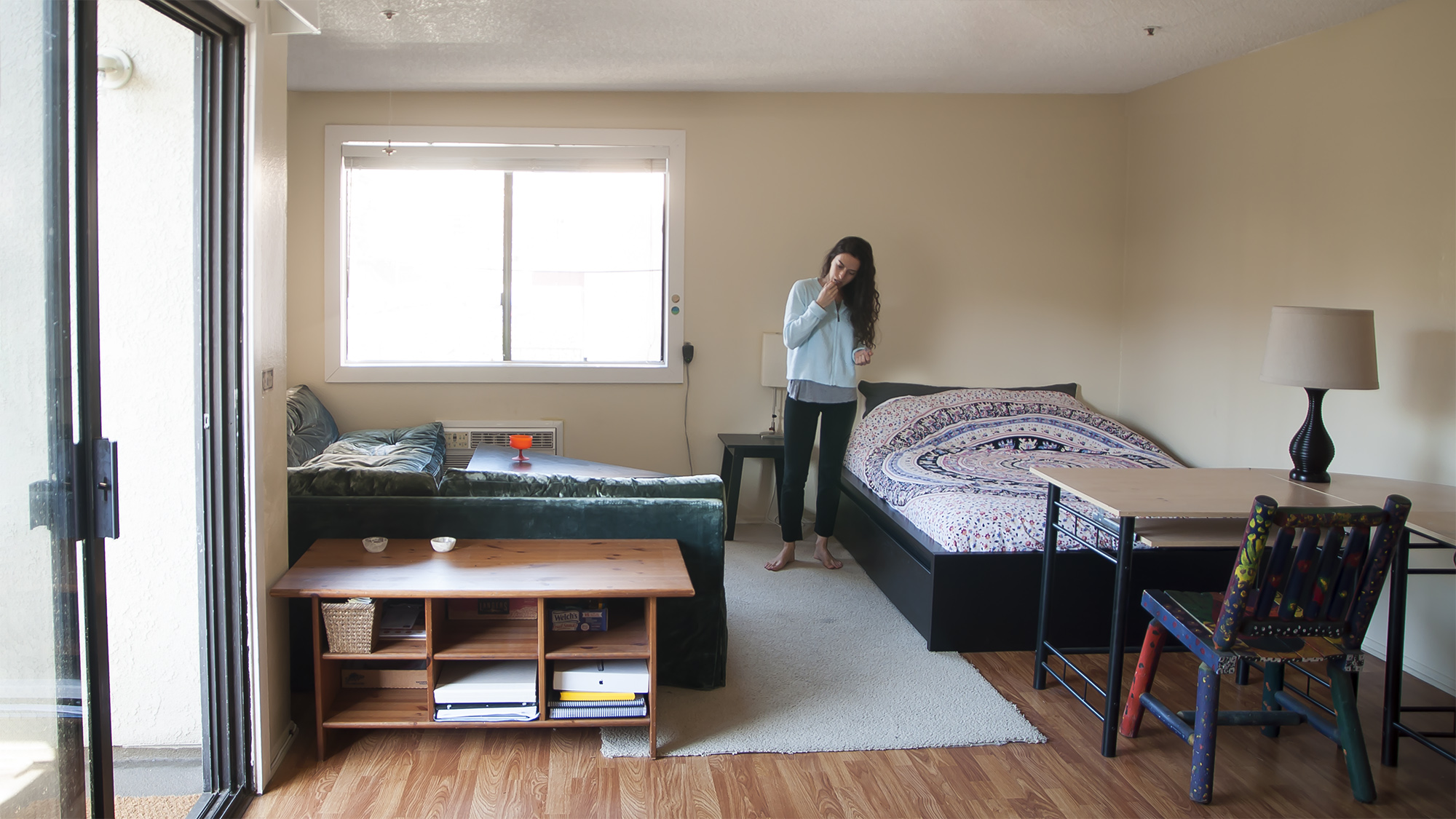
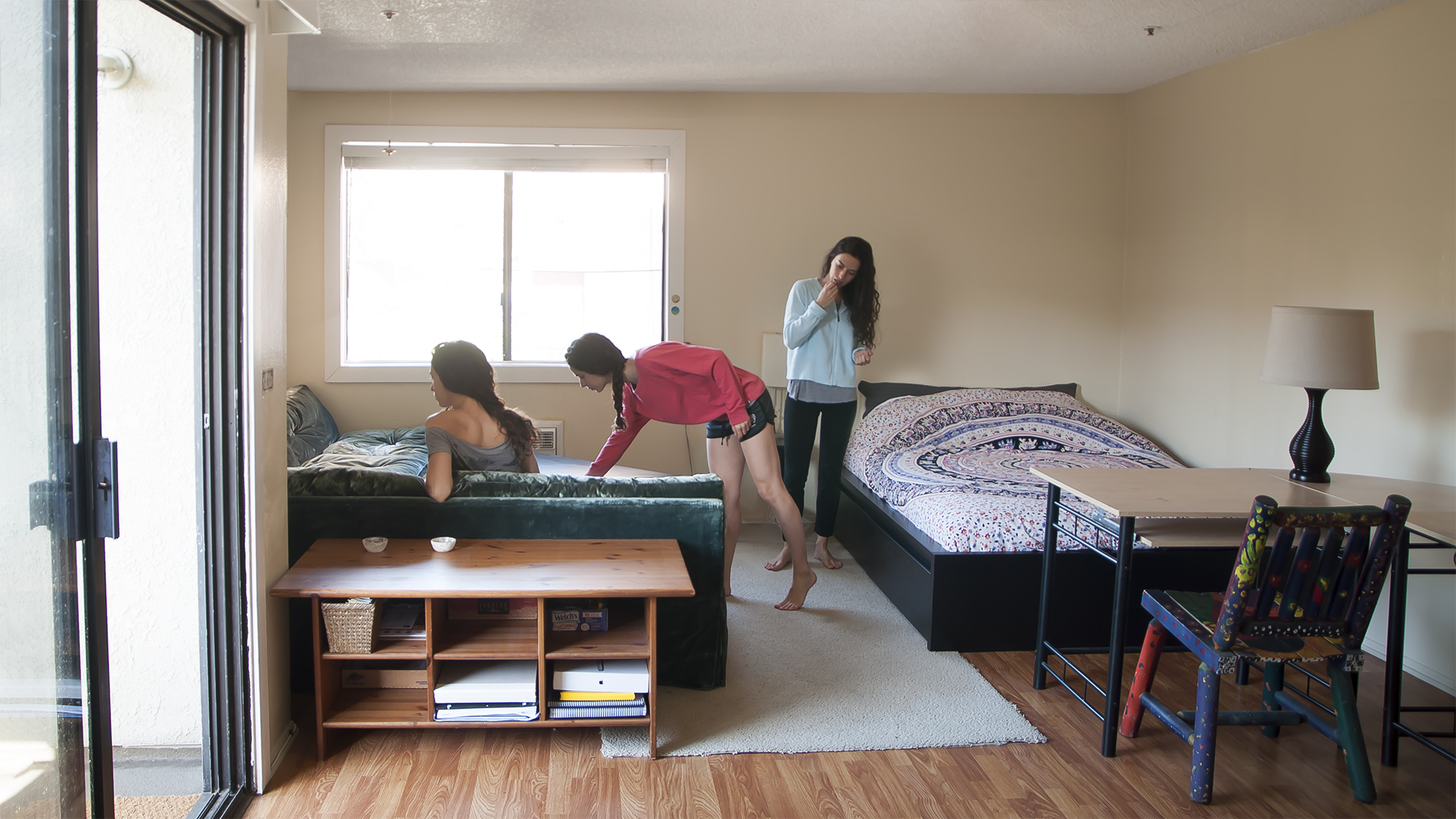
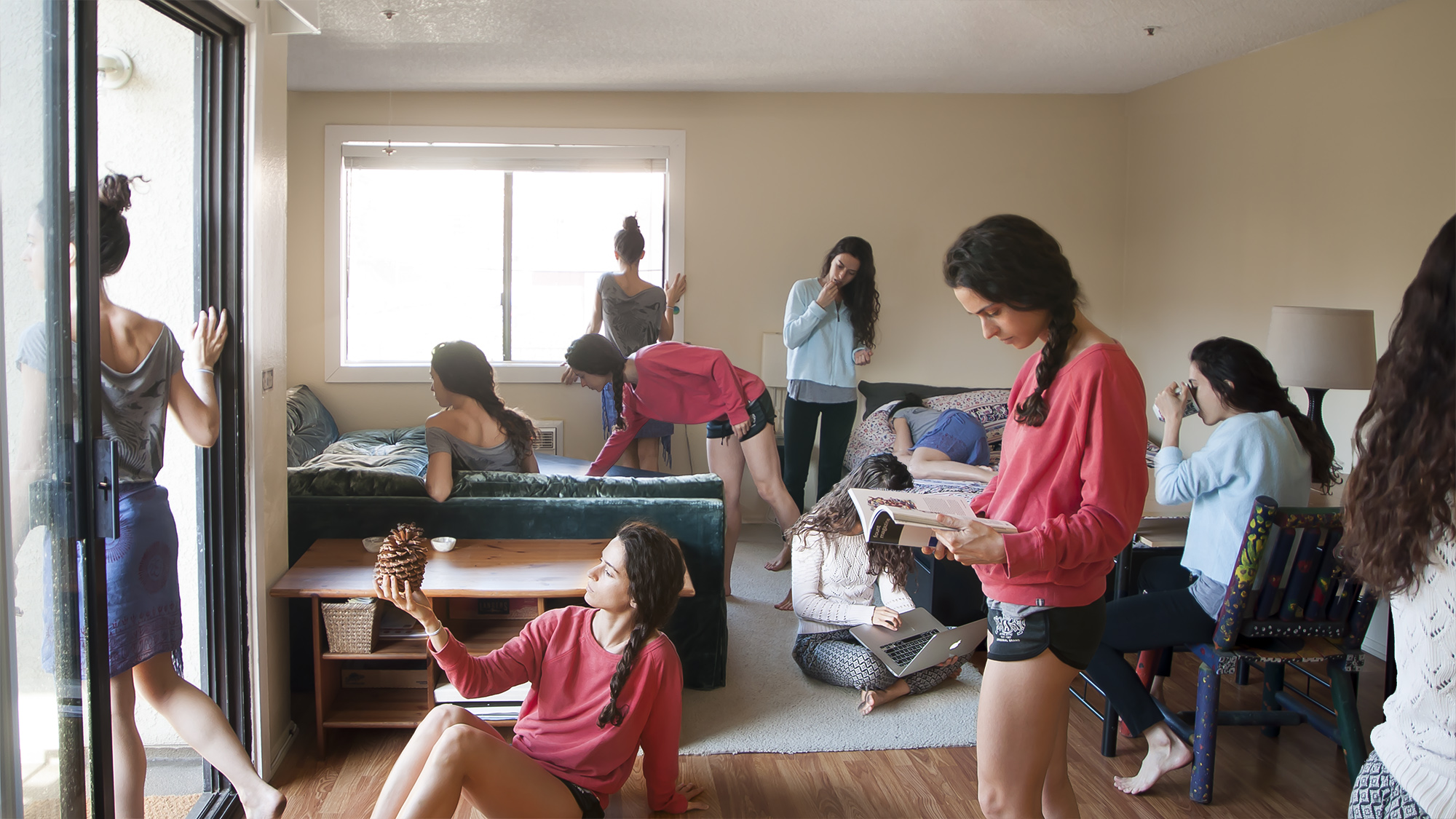
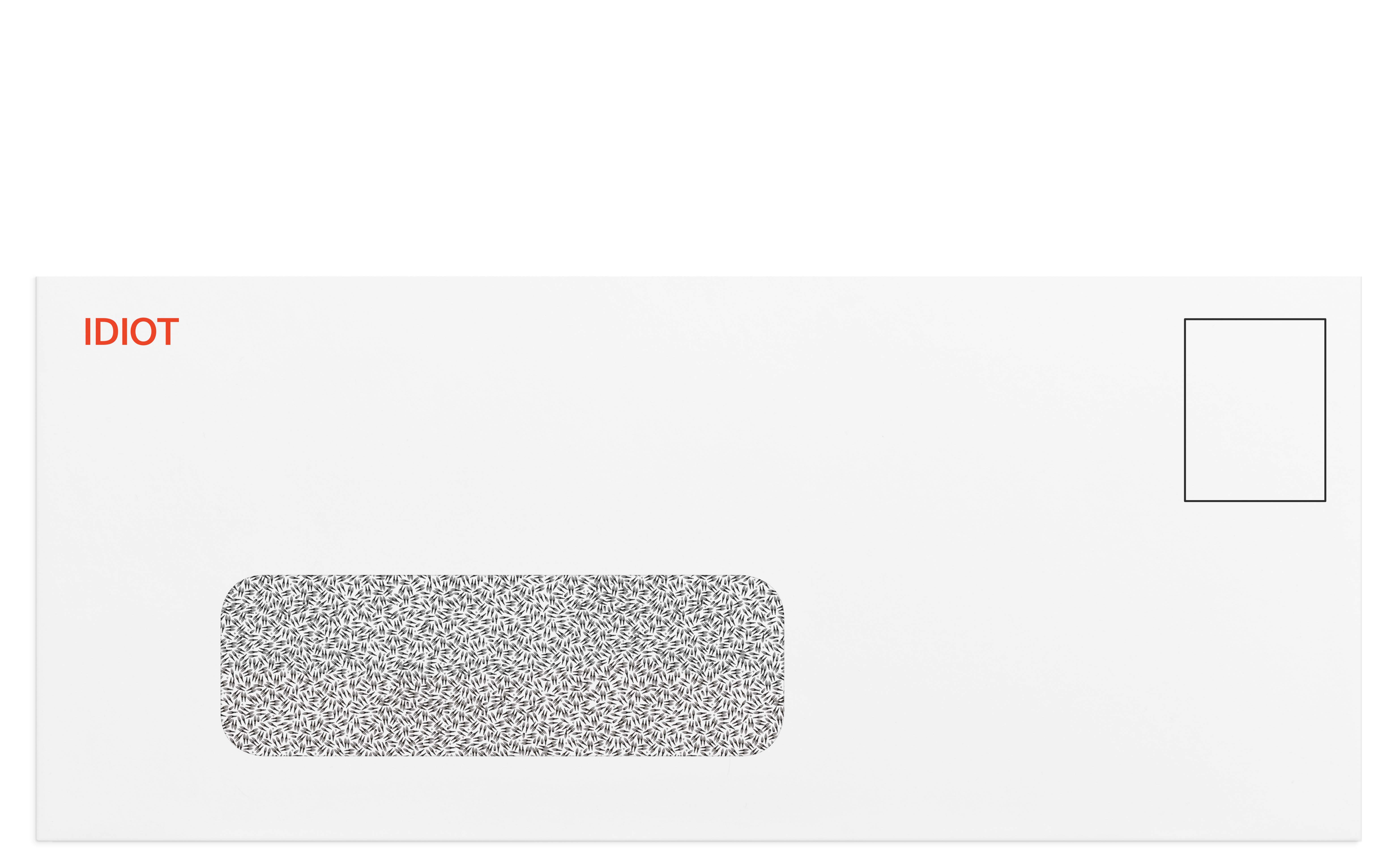
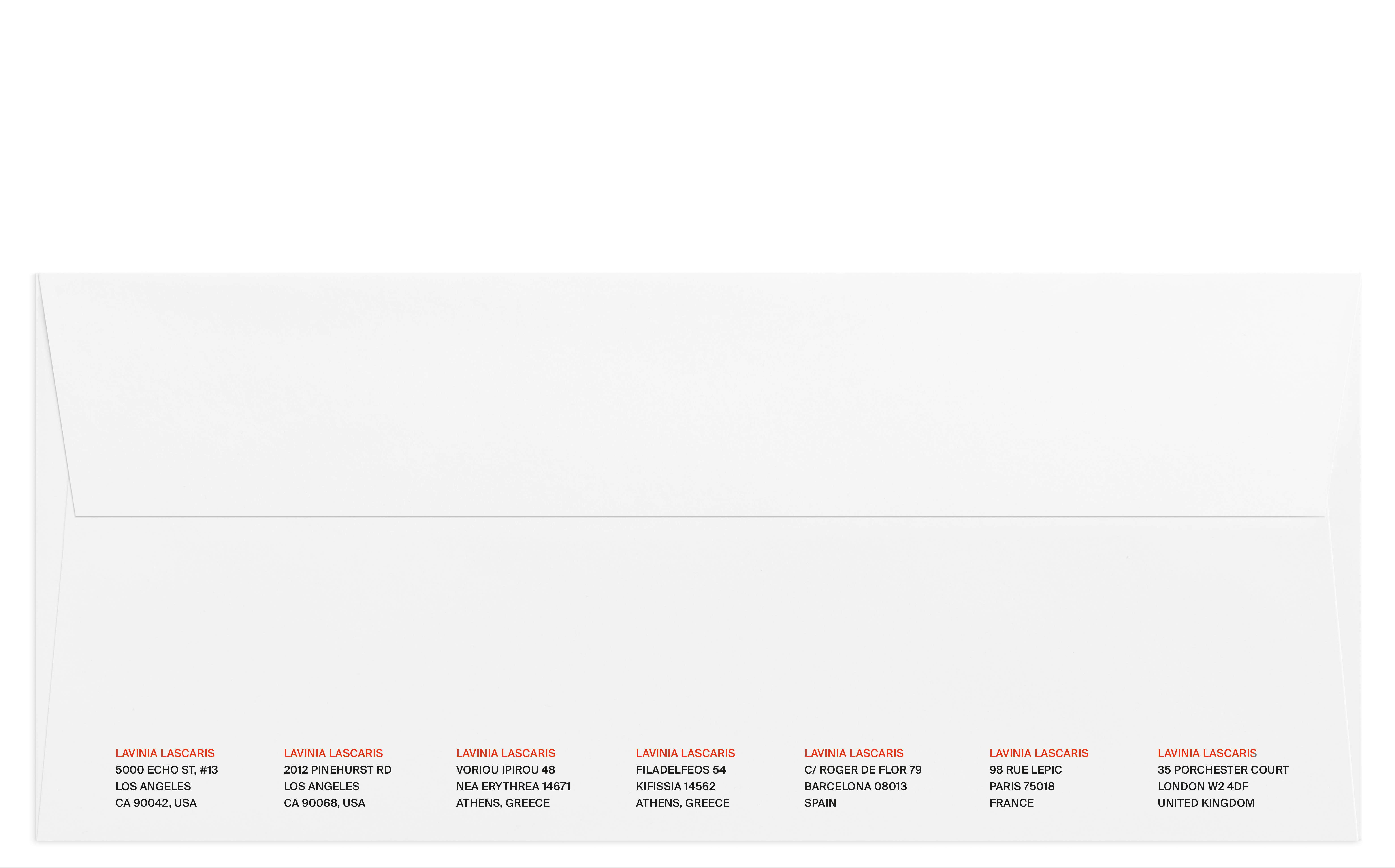
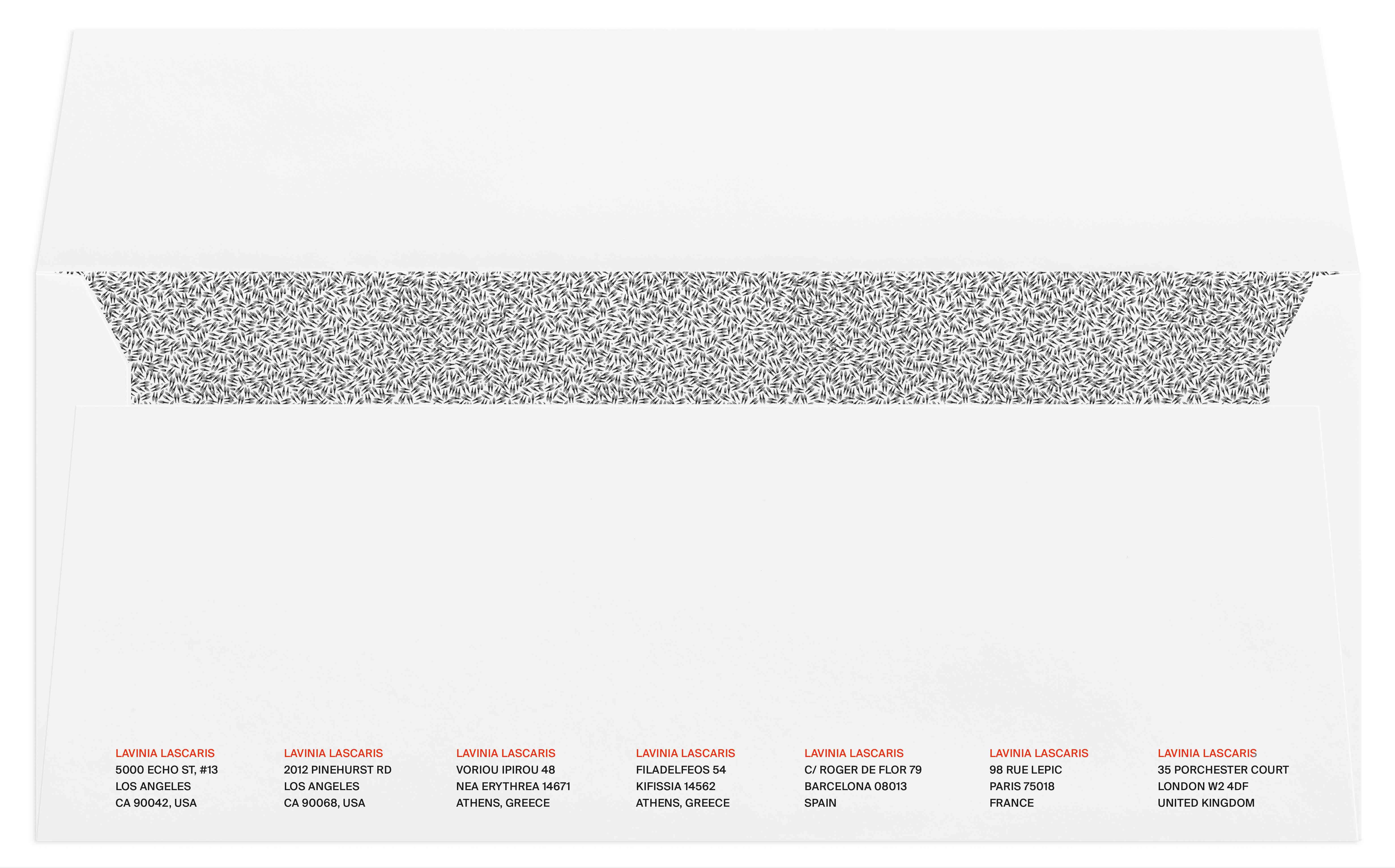
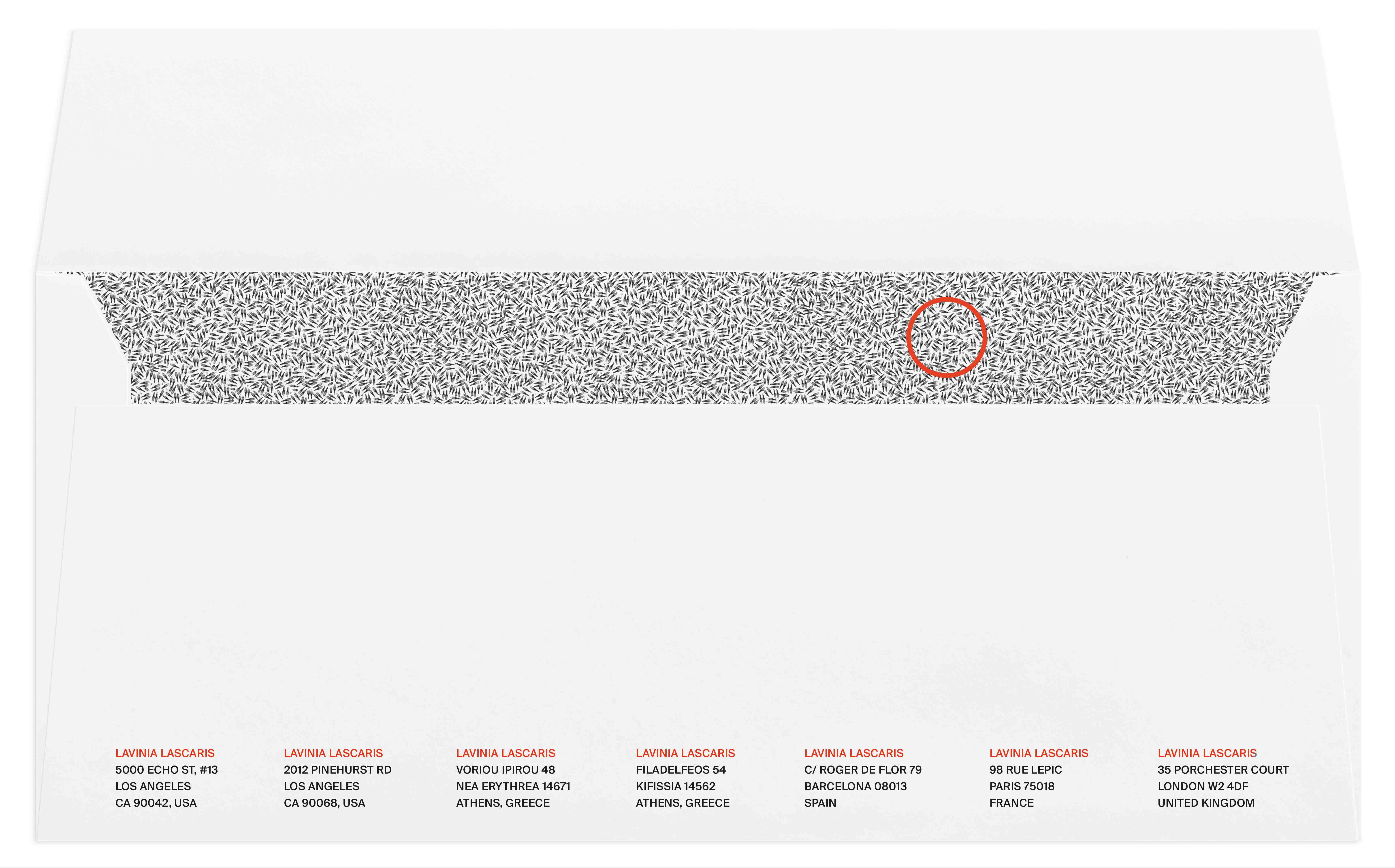
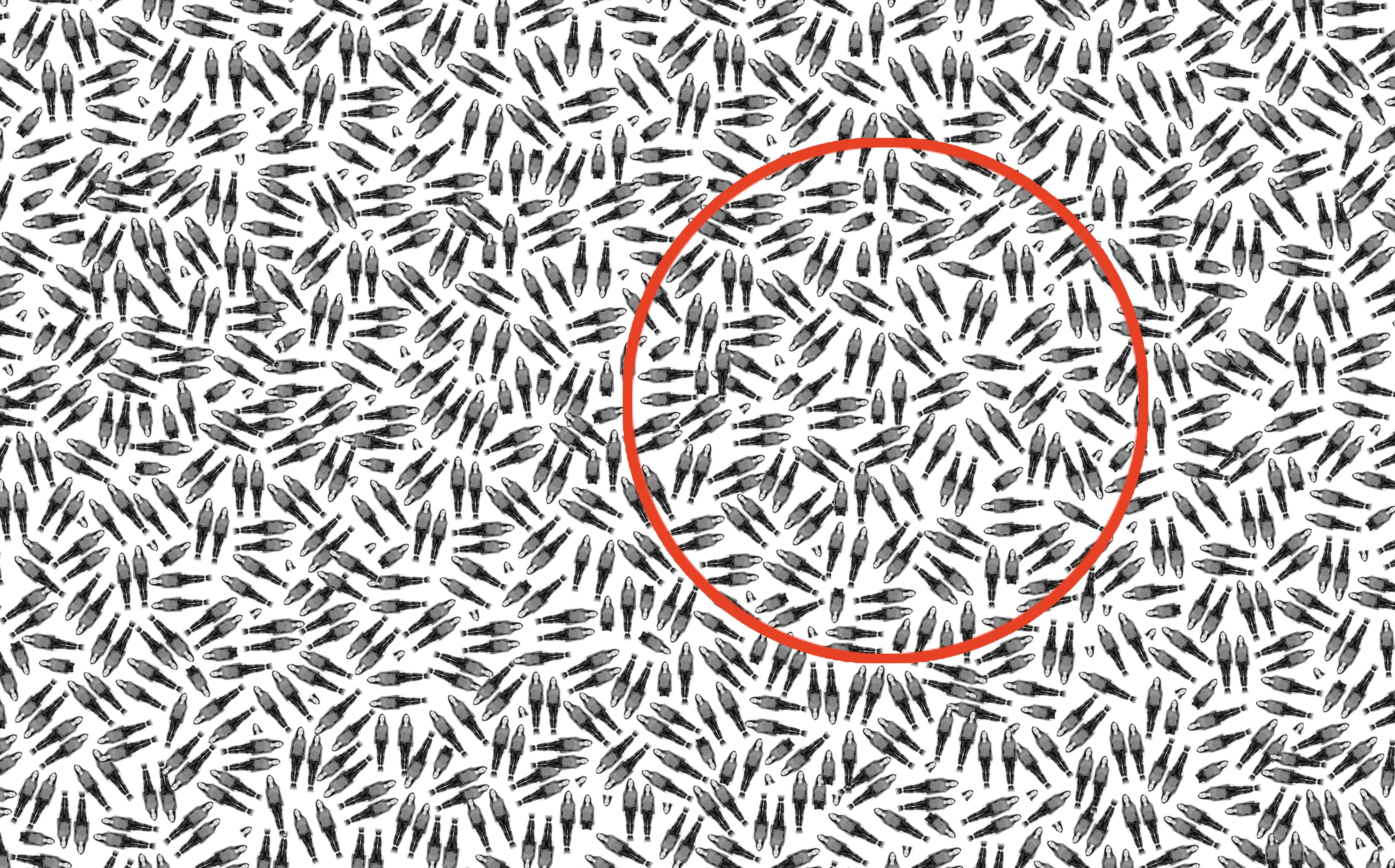
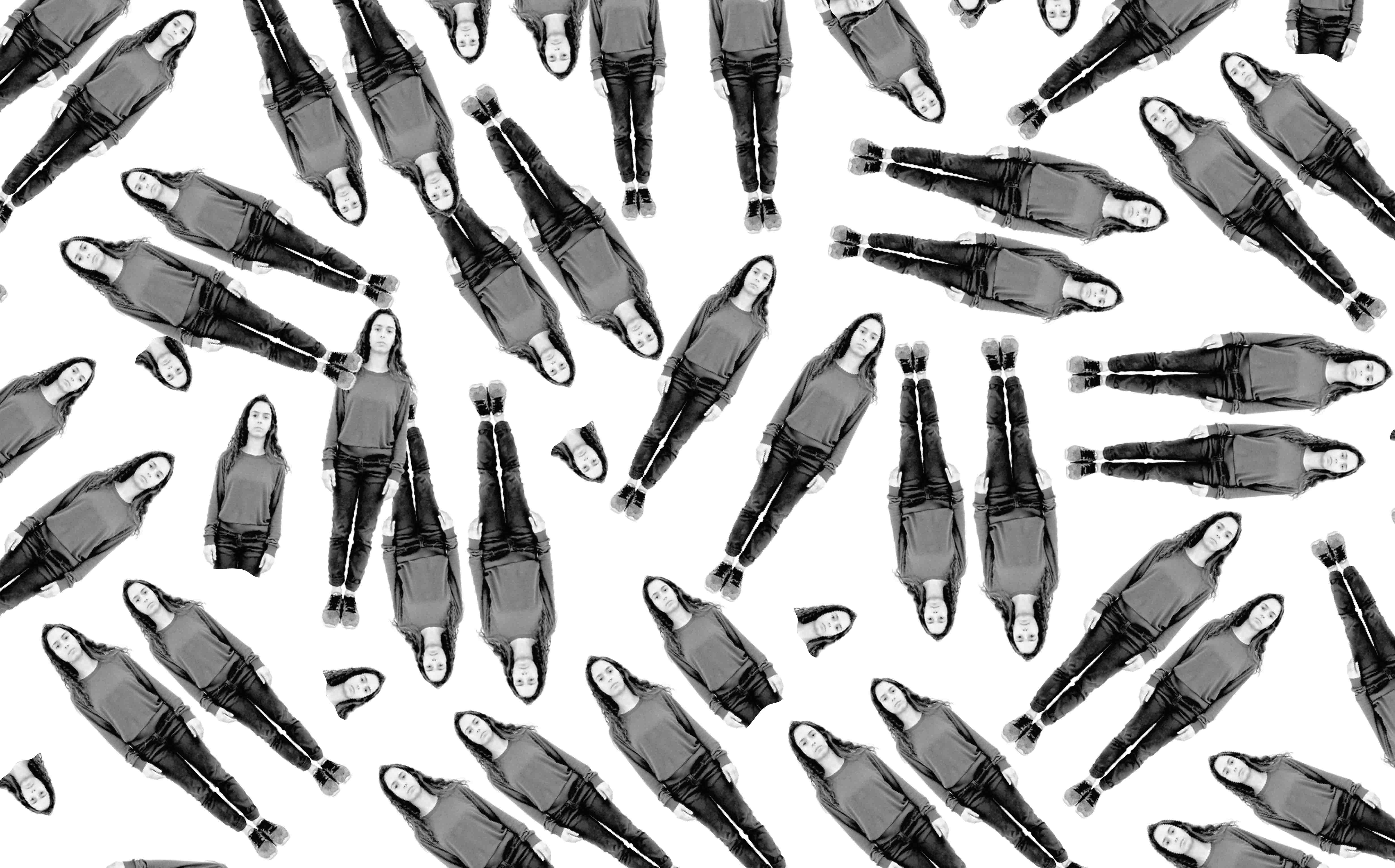
Process book
Documents final deliveralbles, research, and formal studies.

